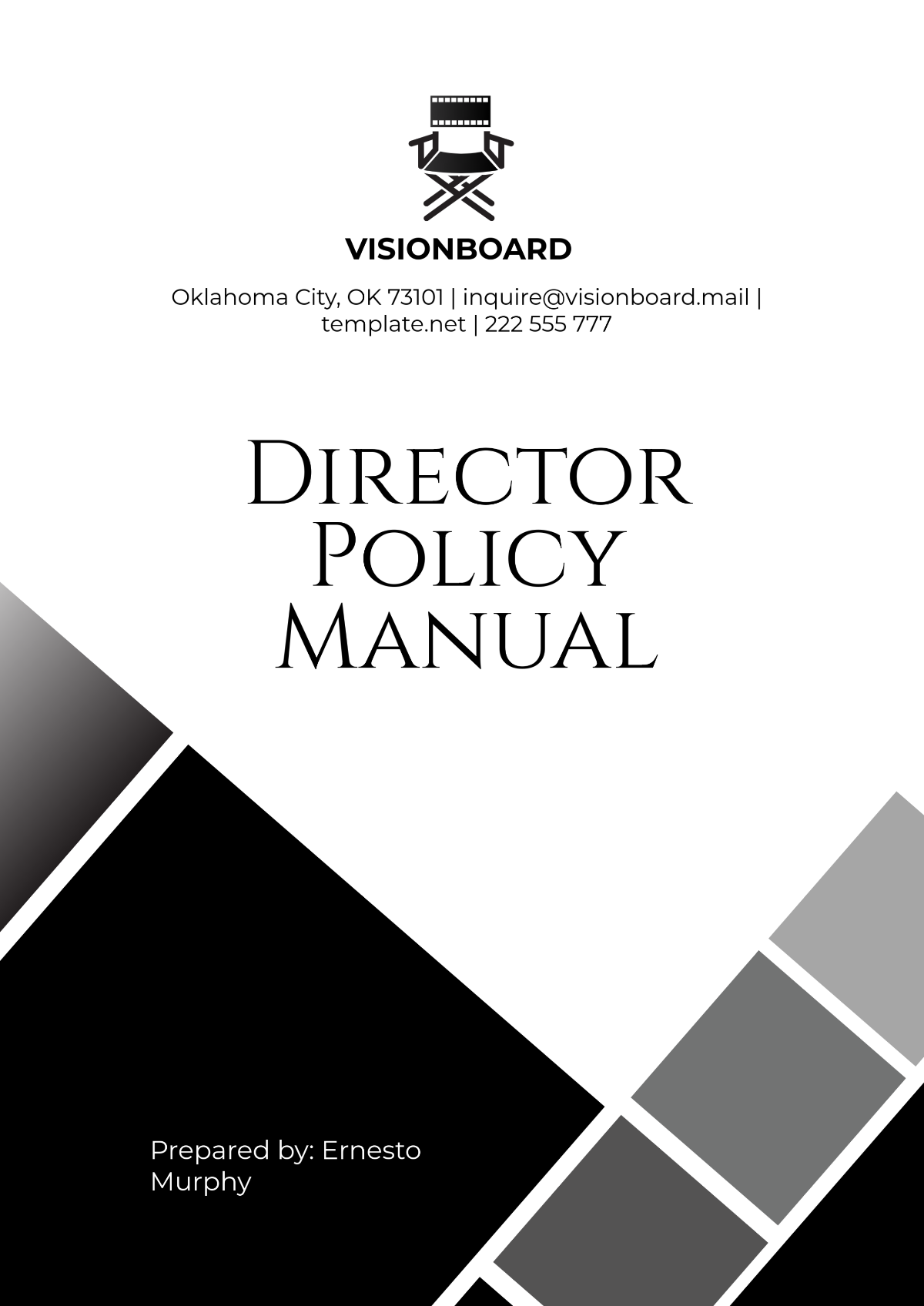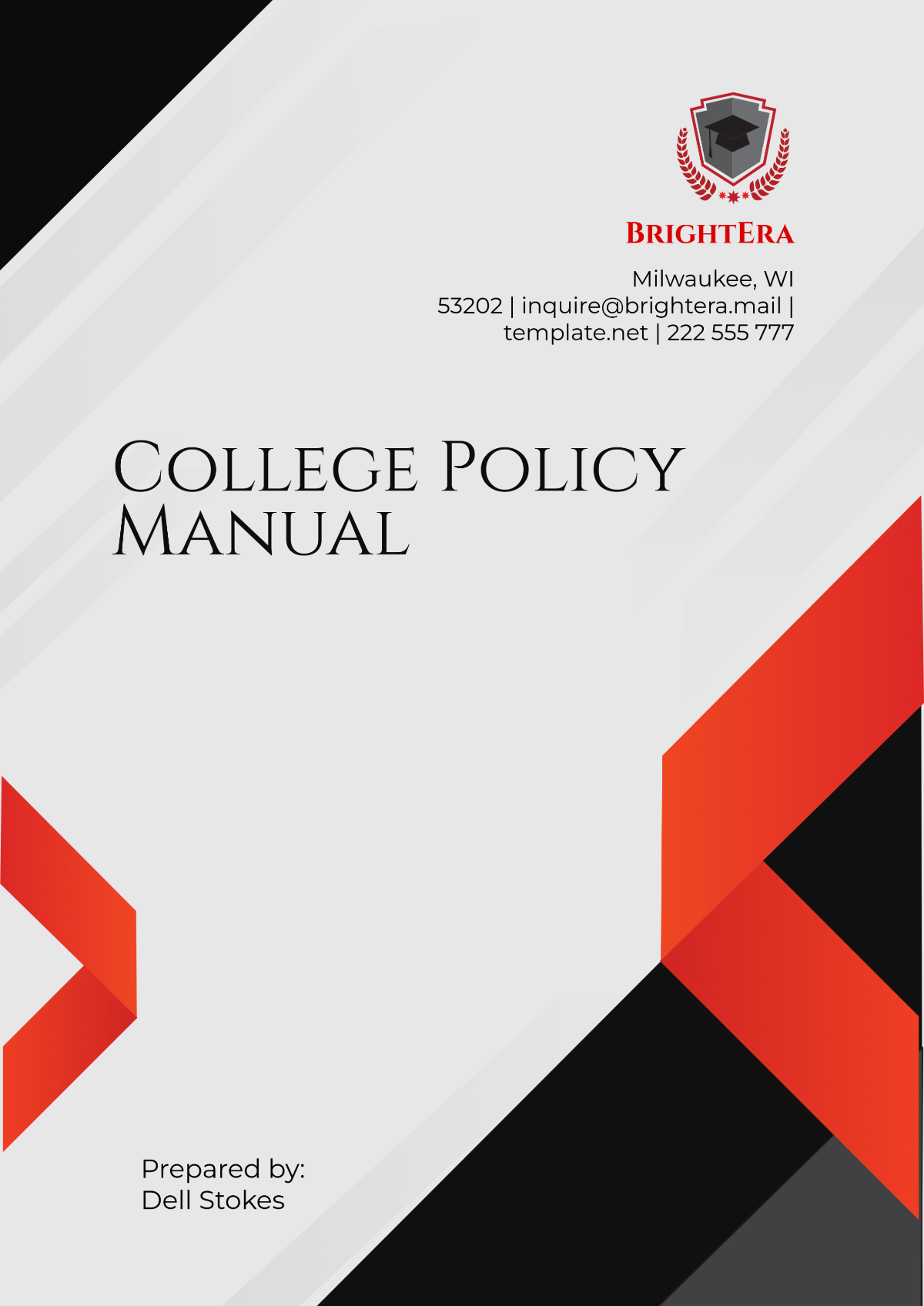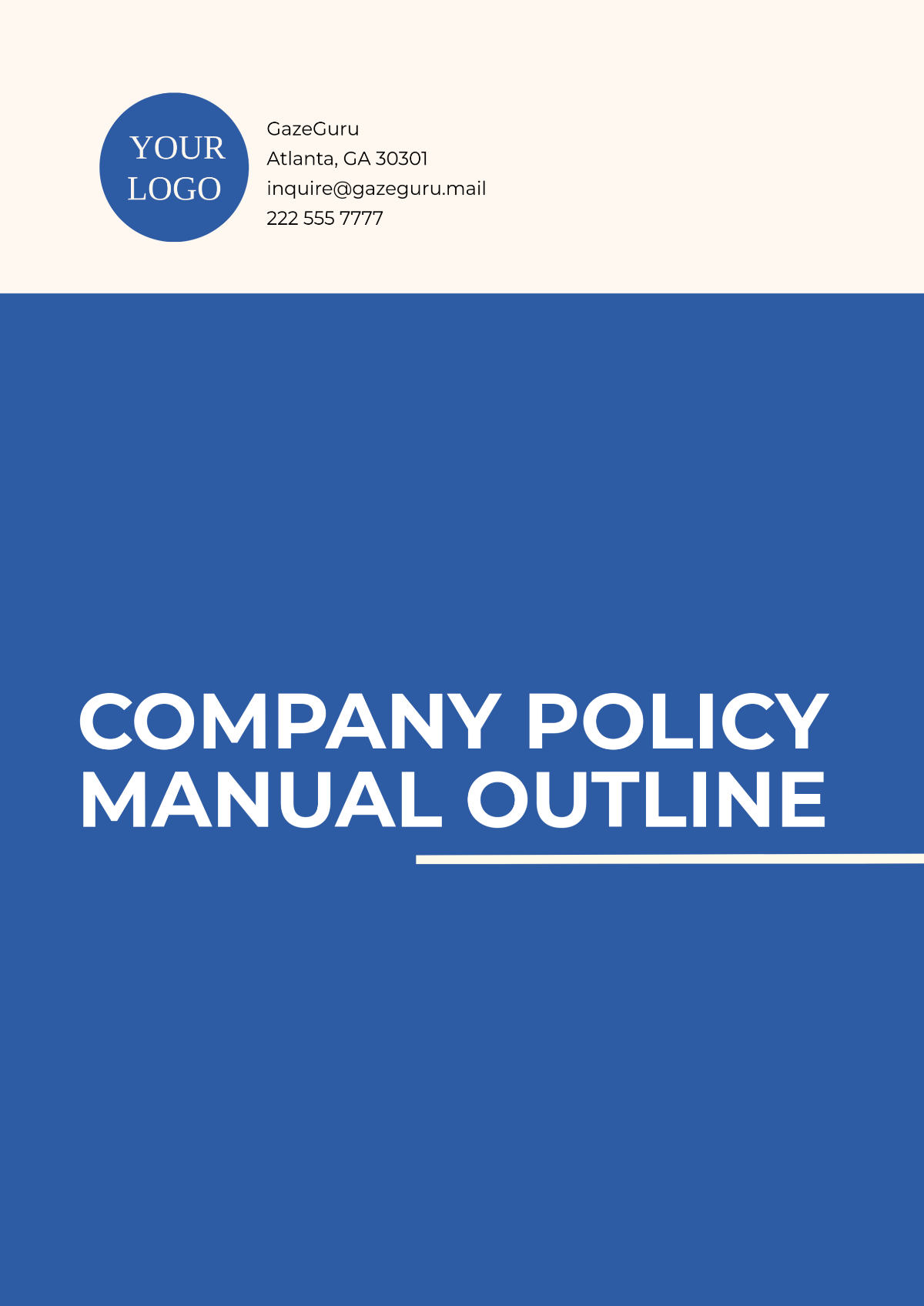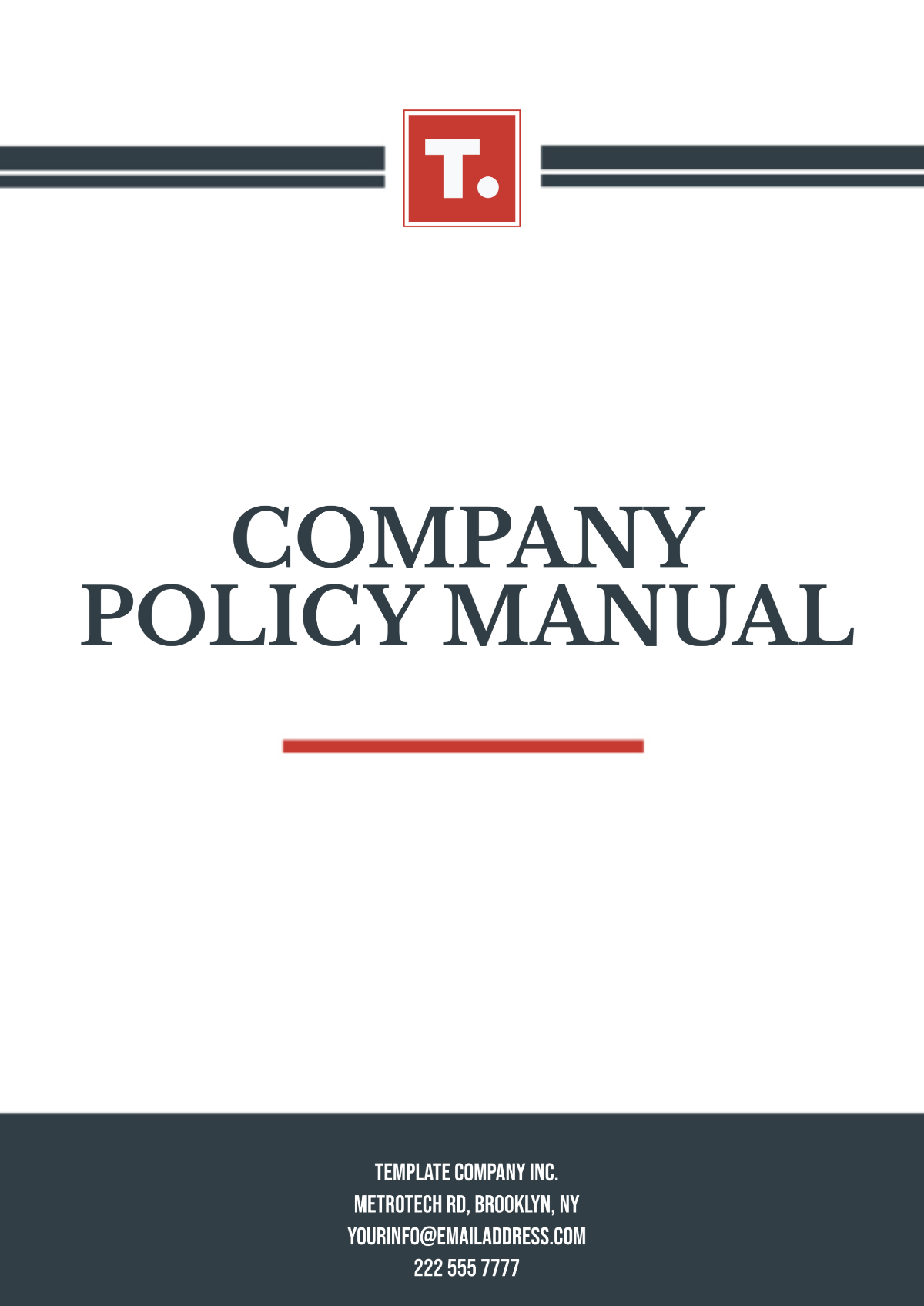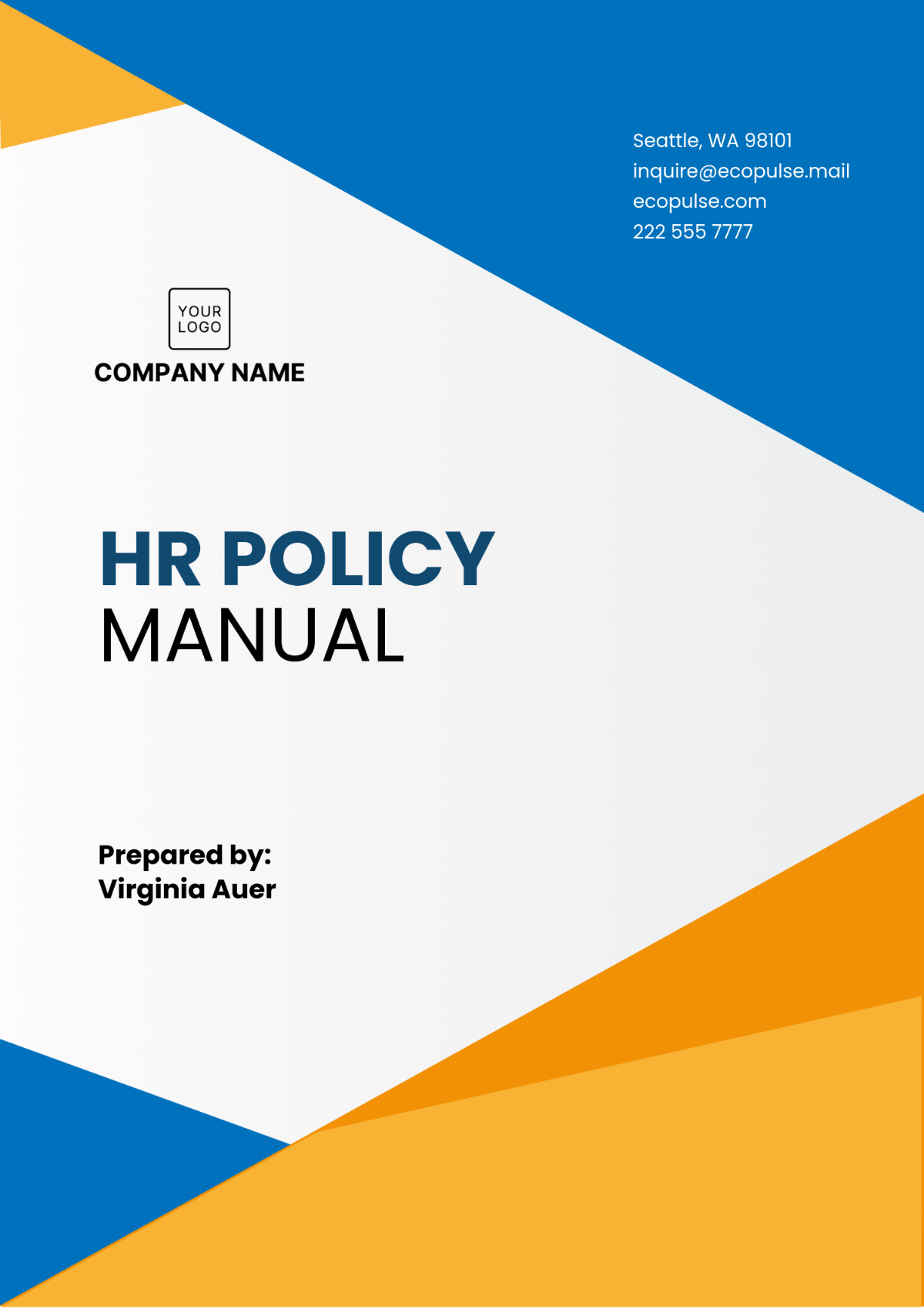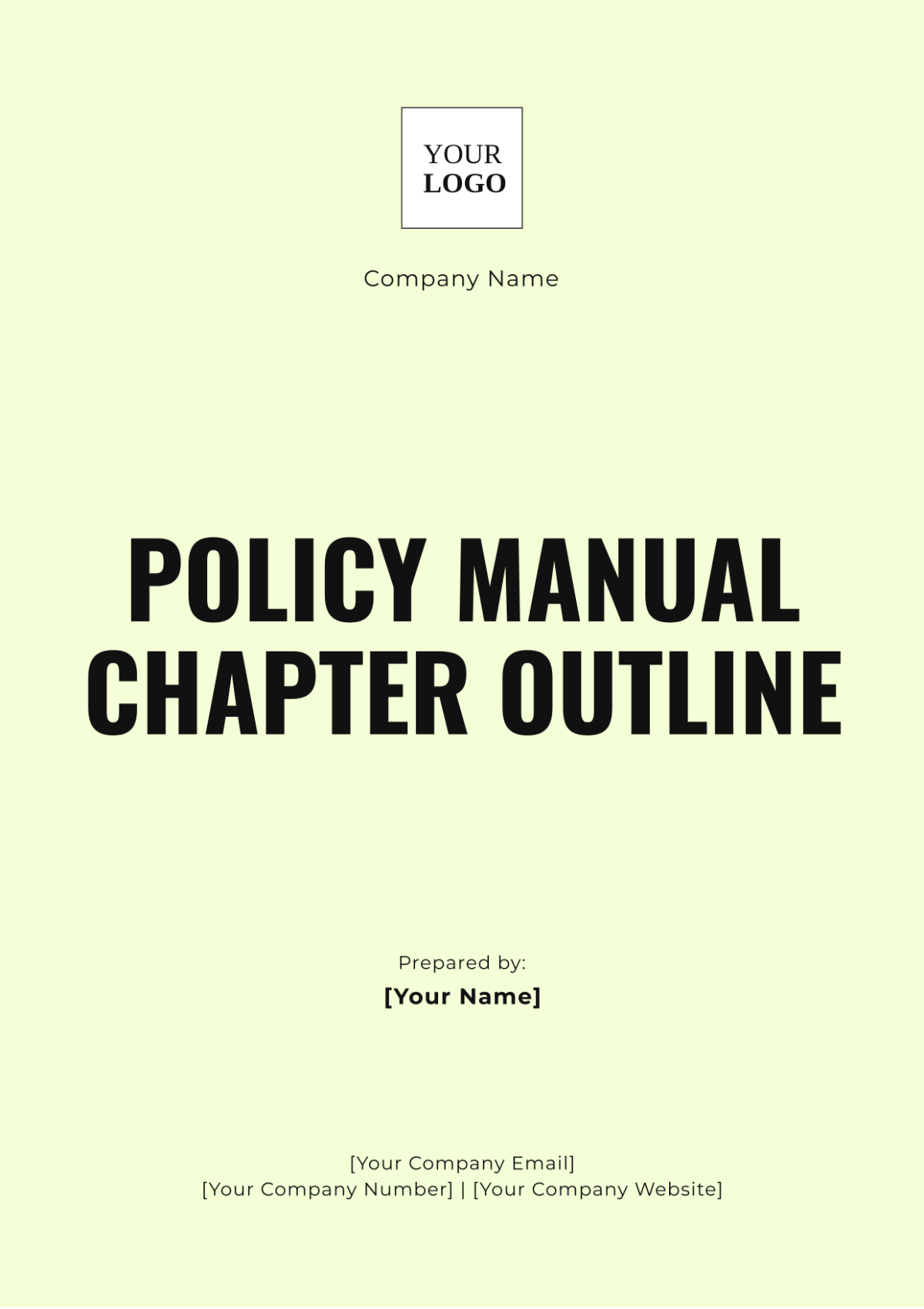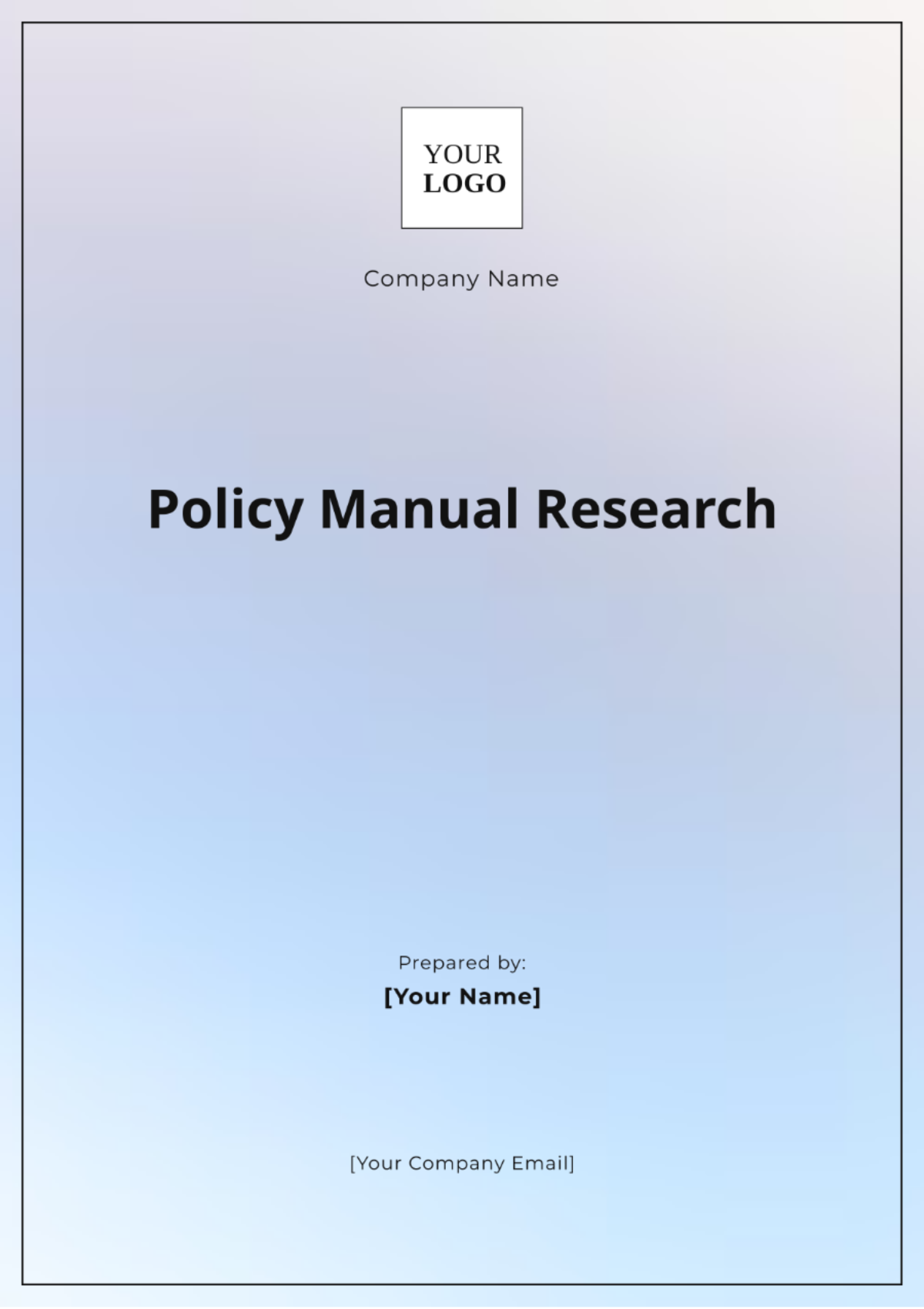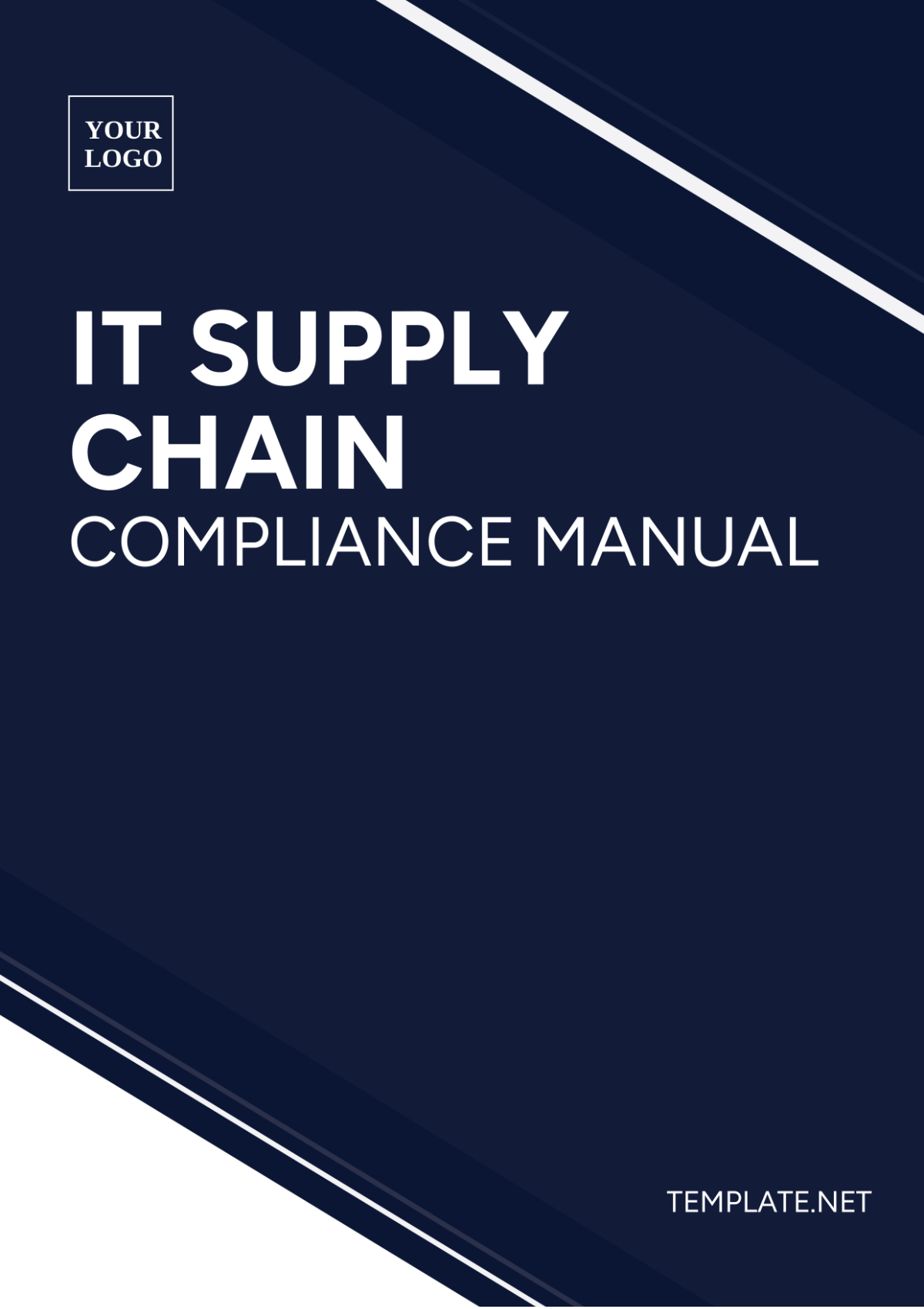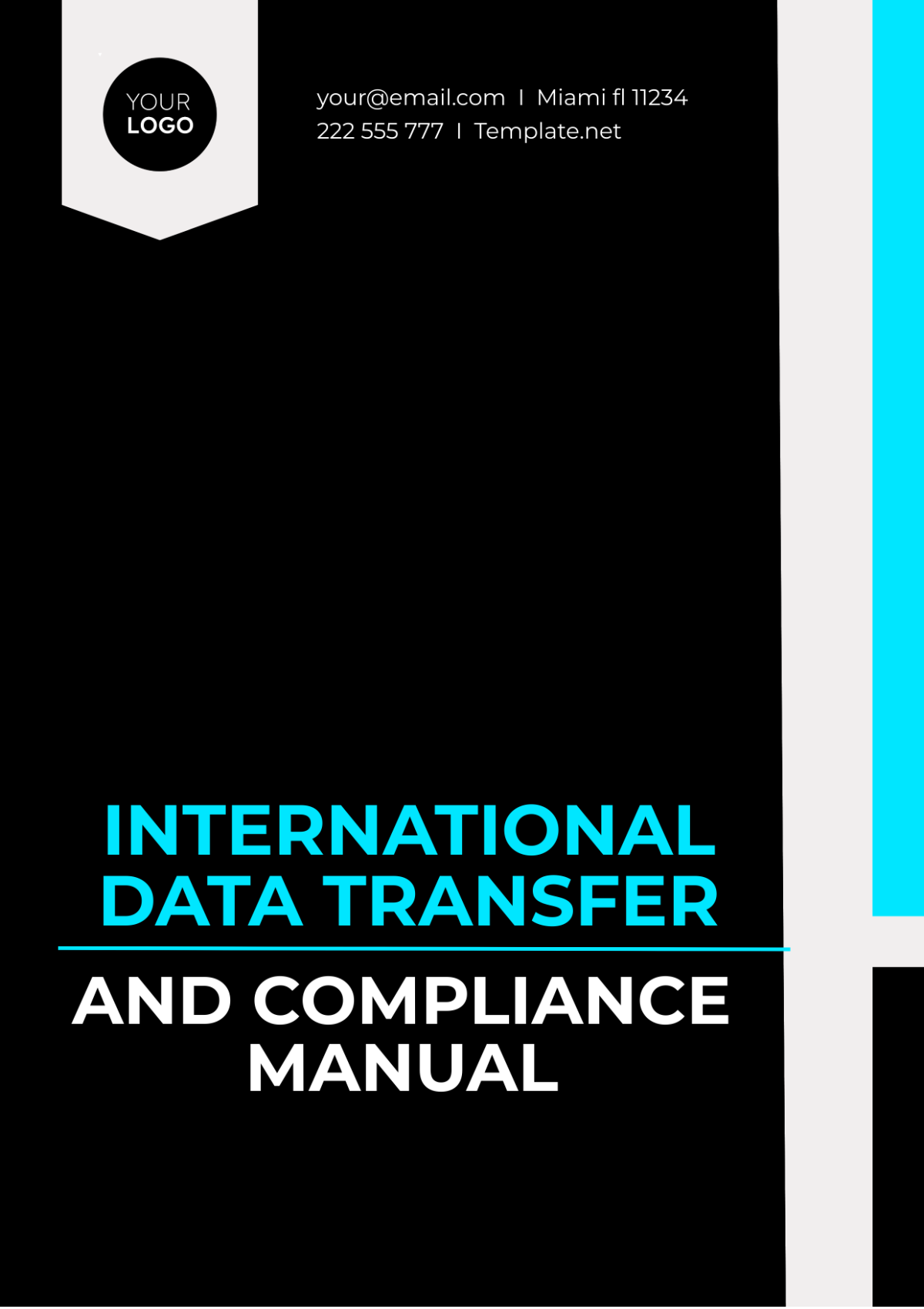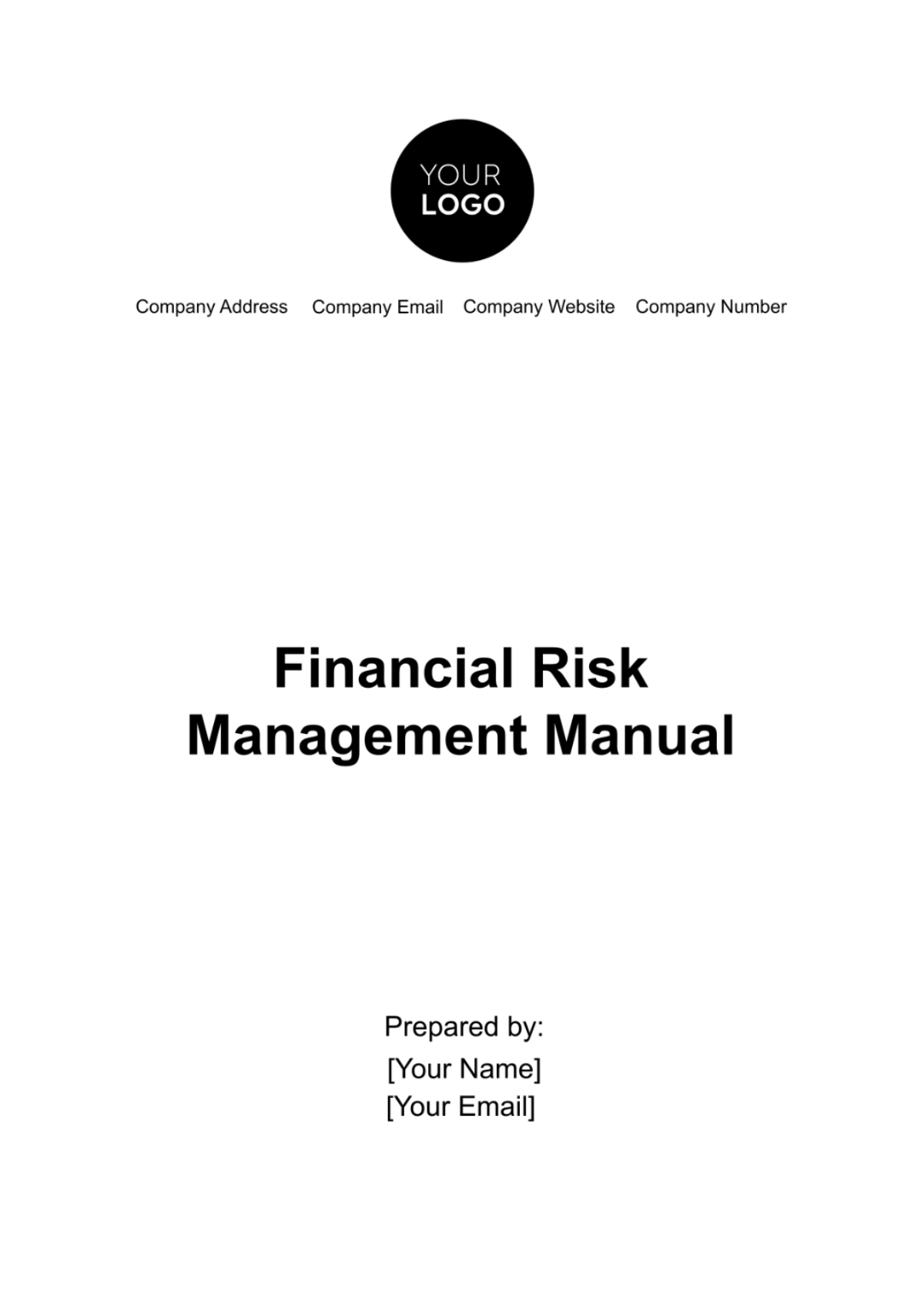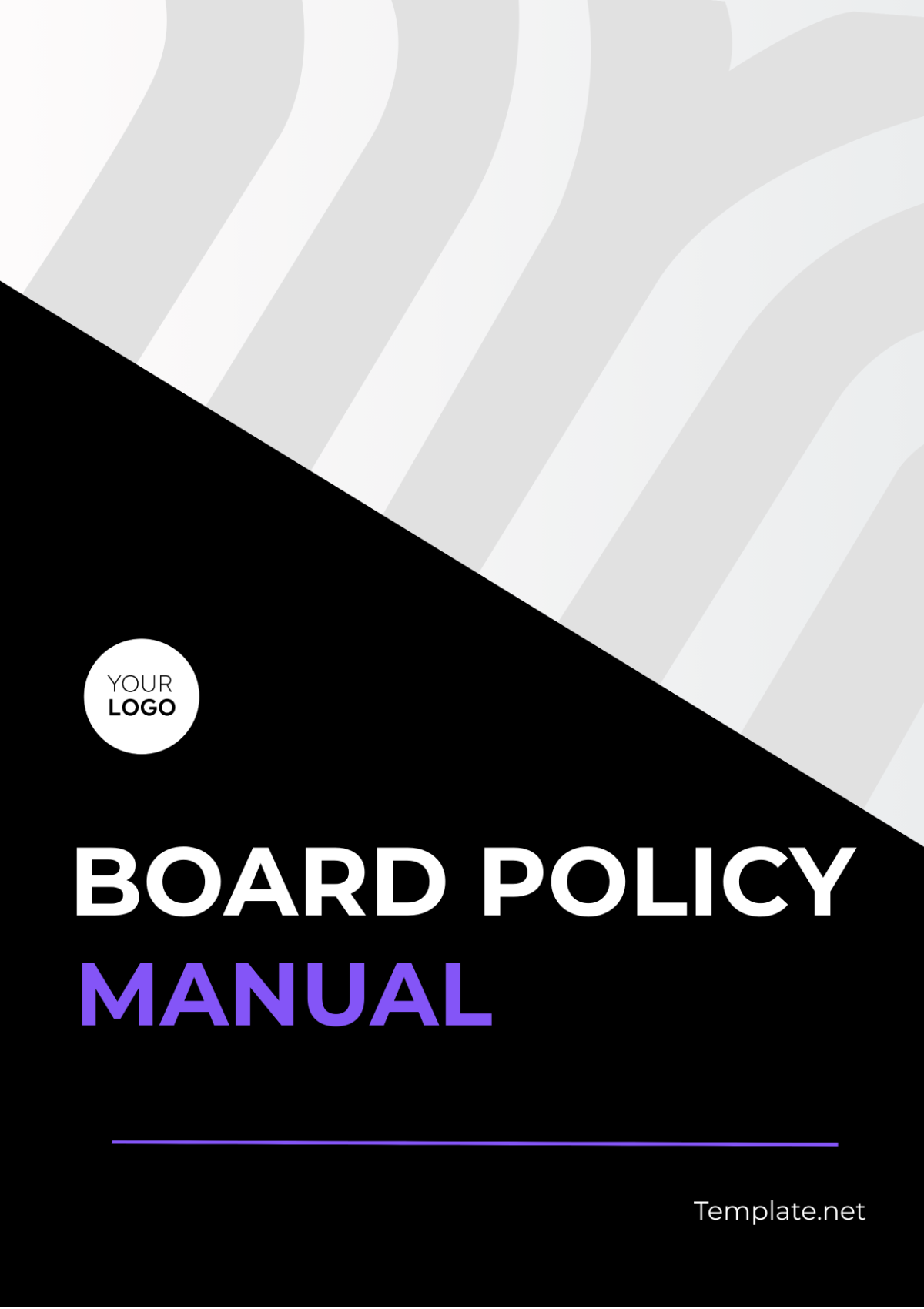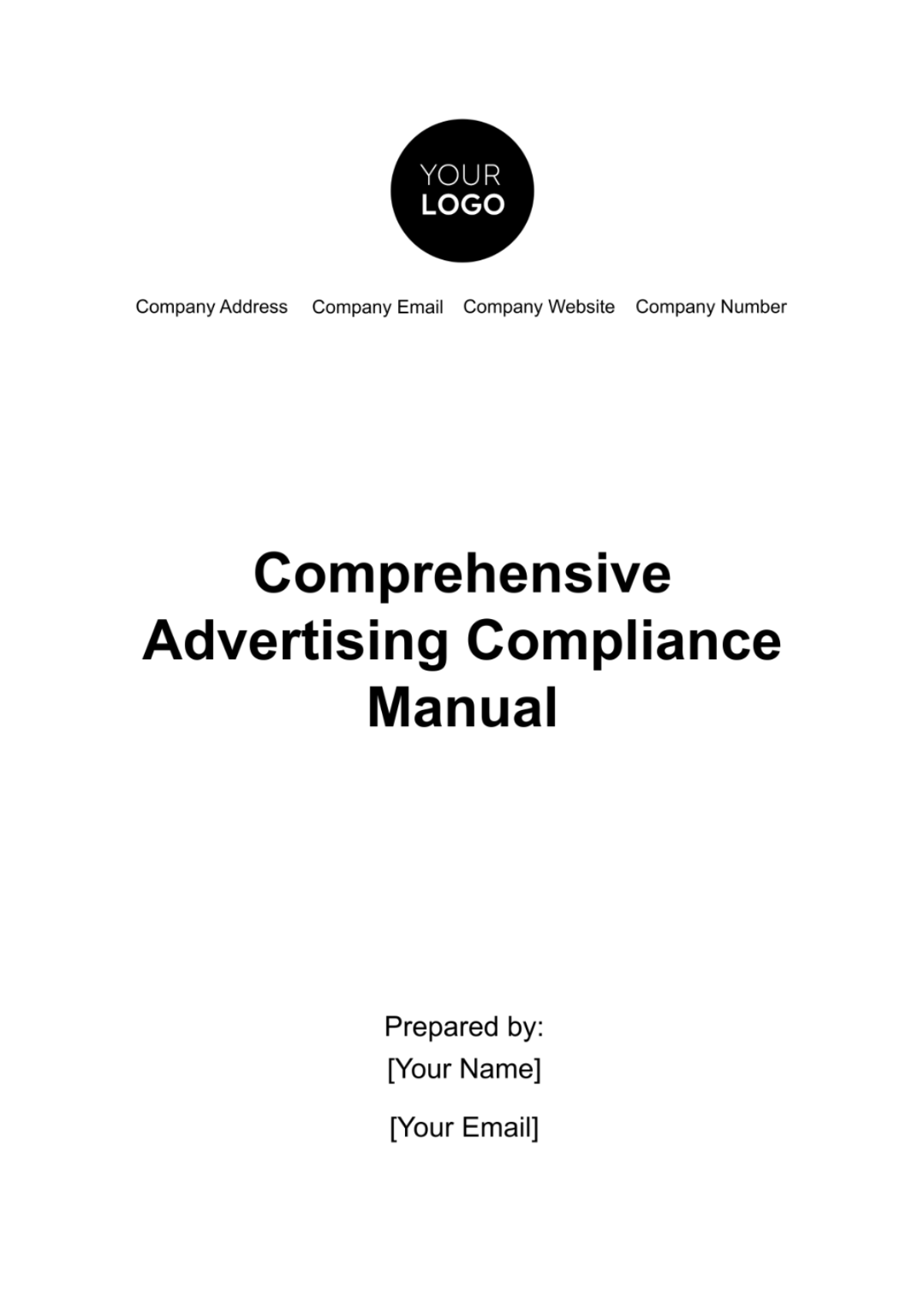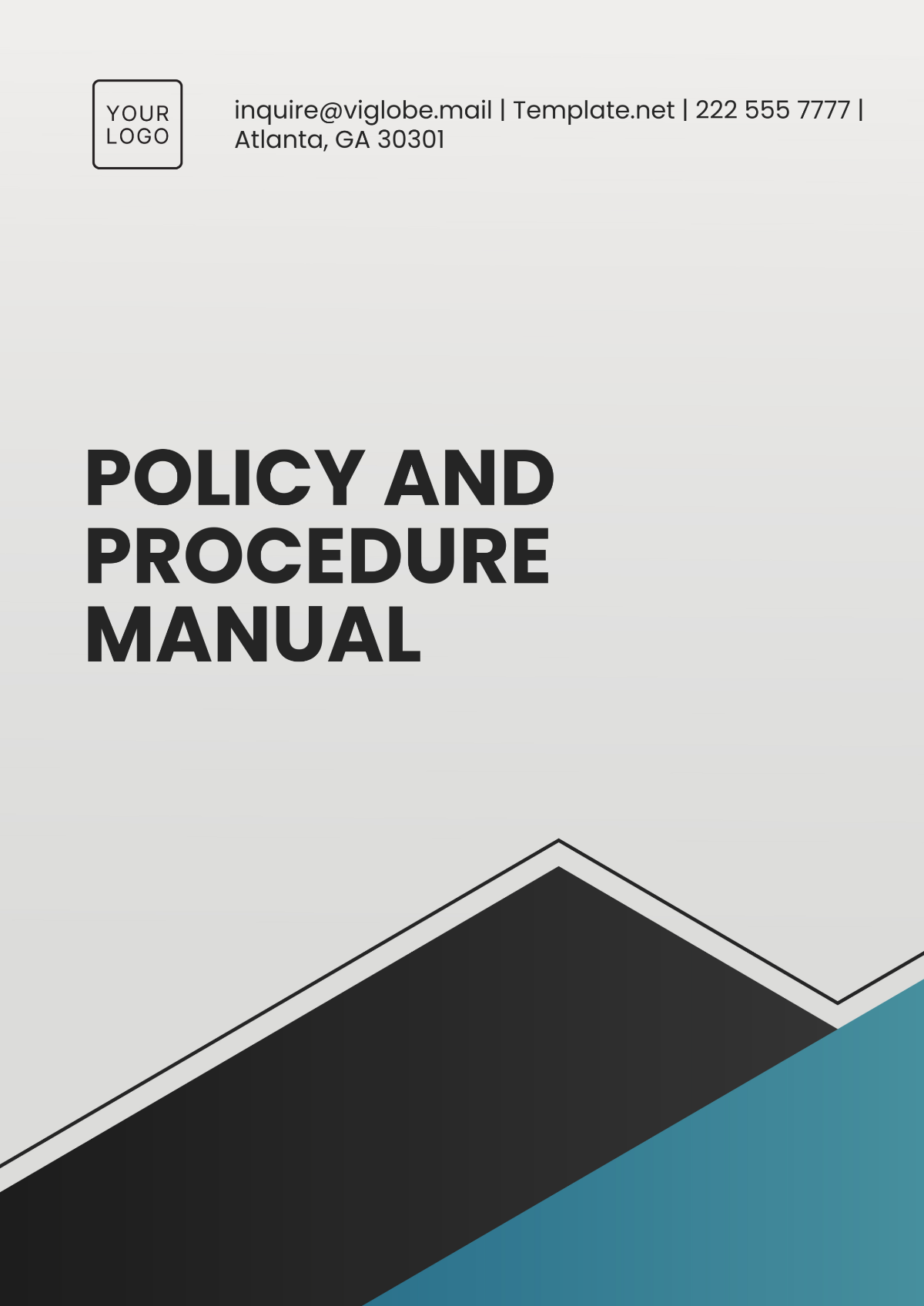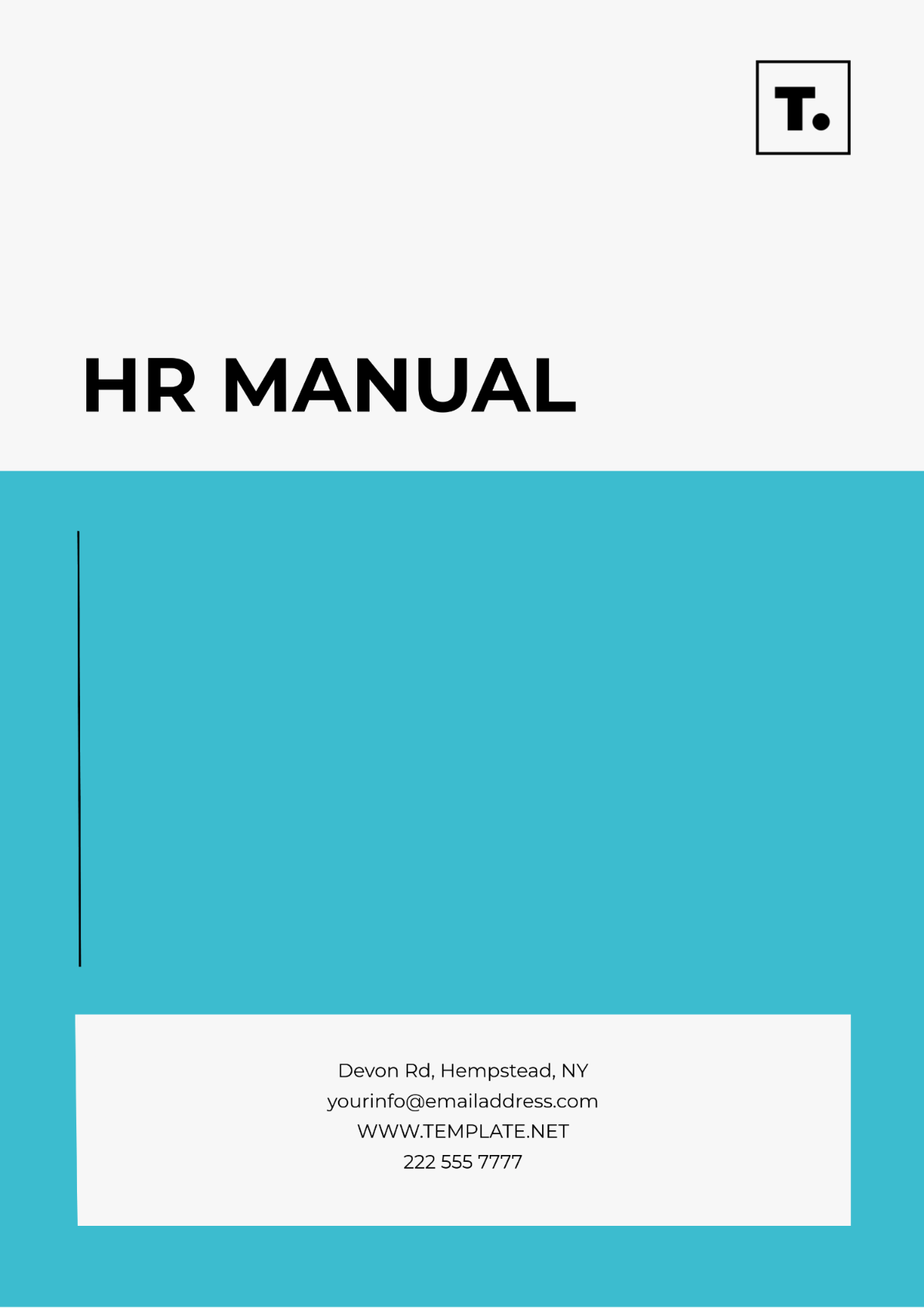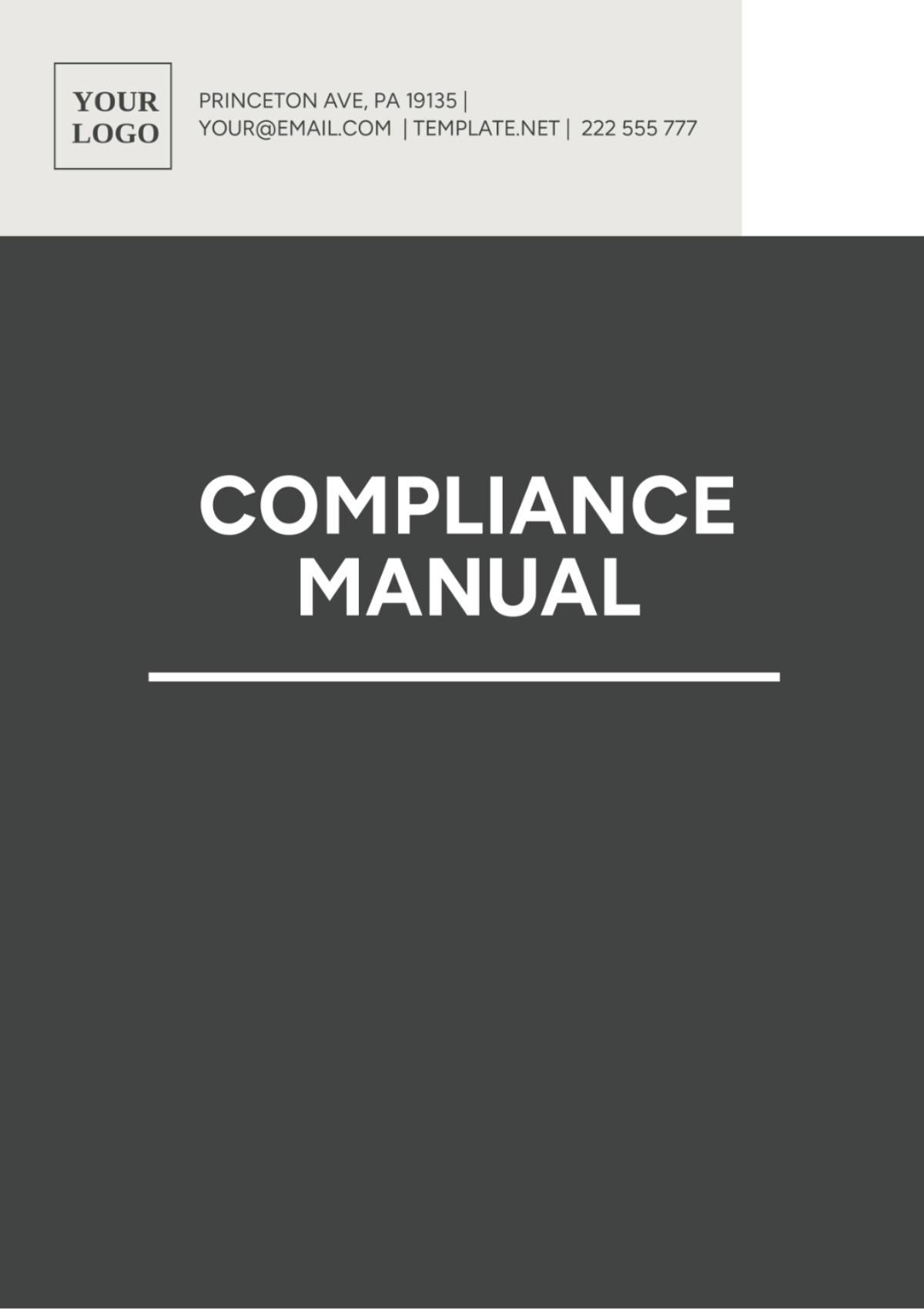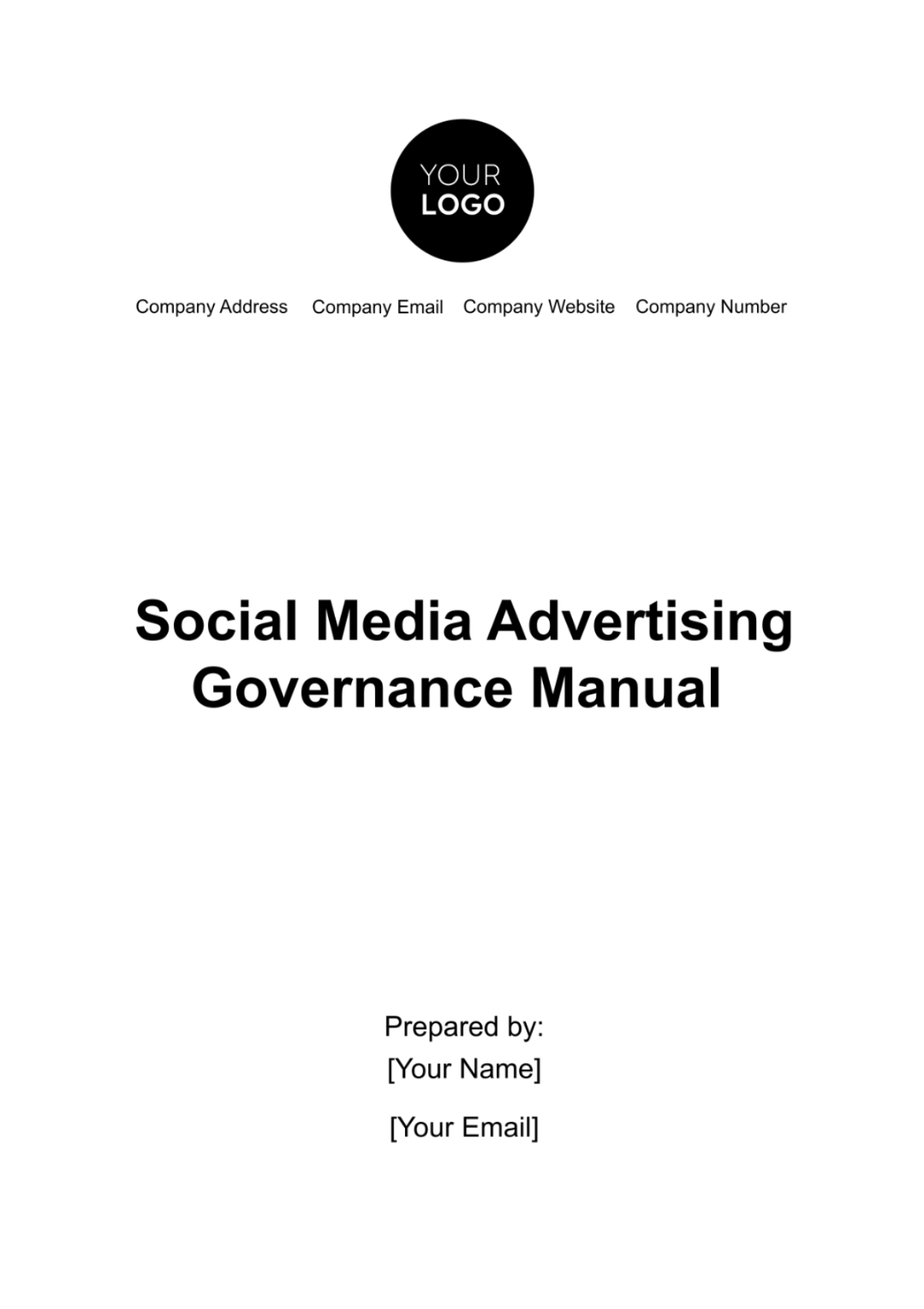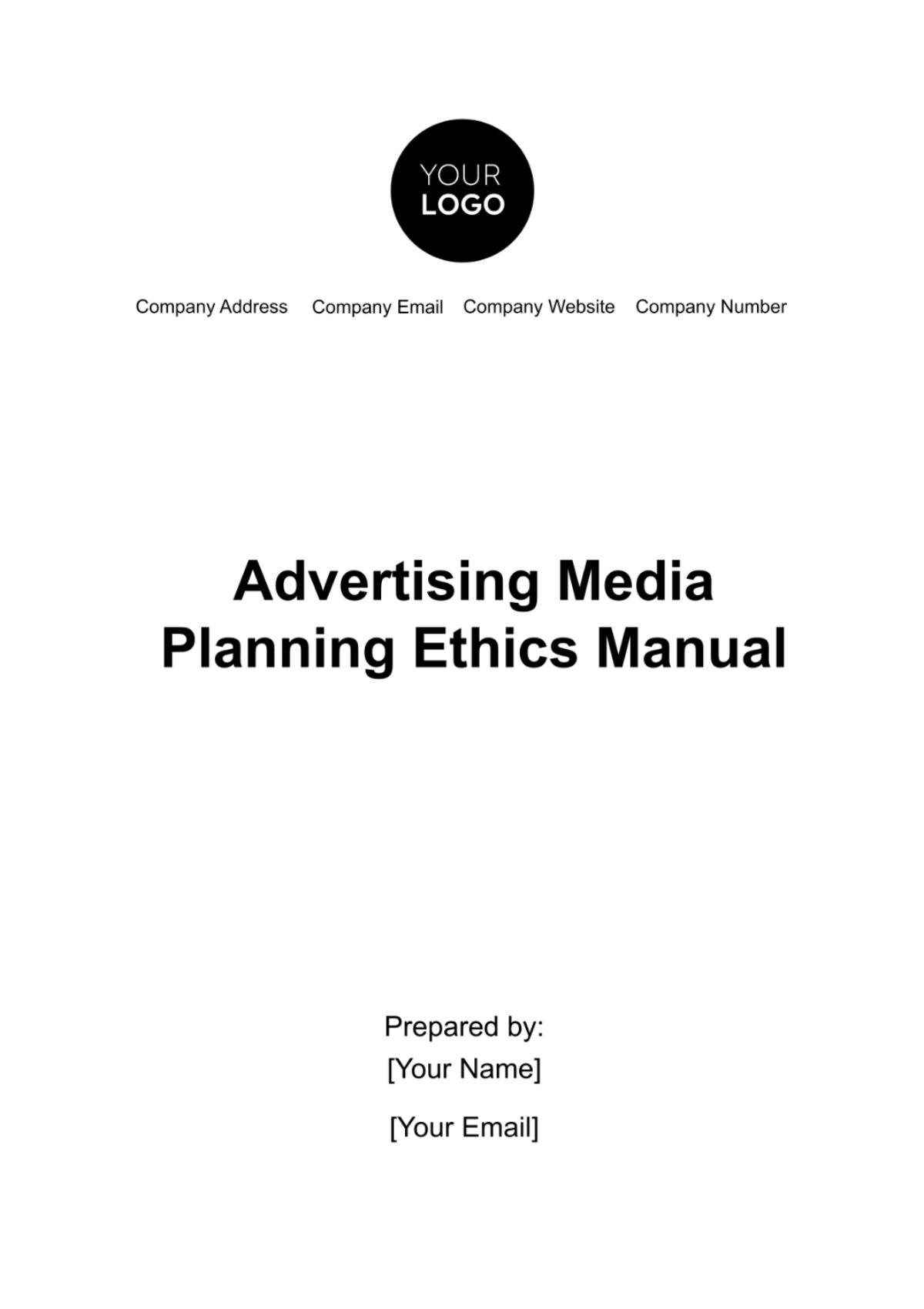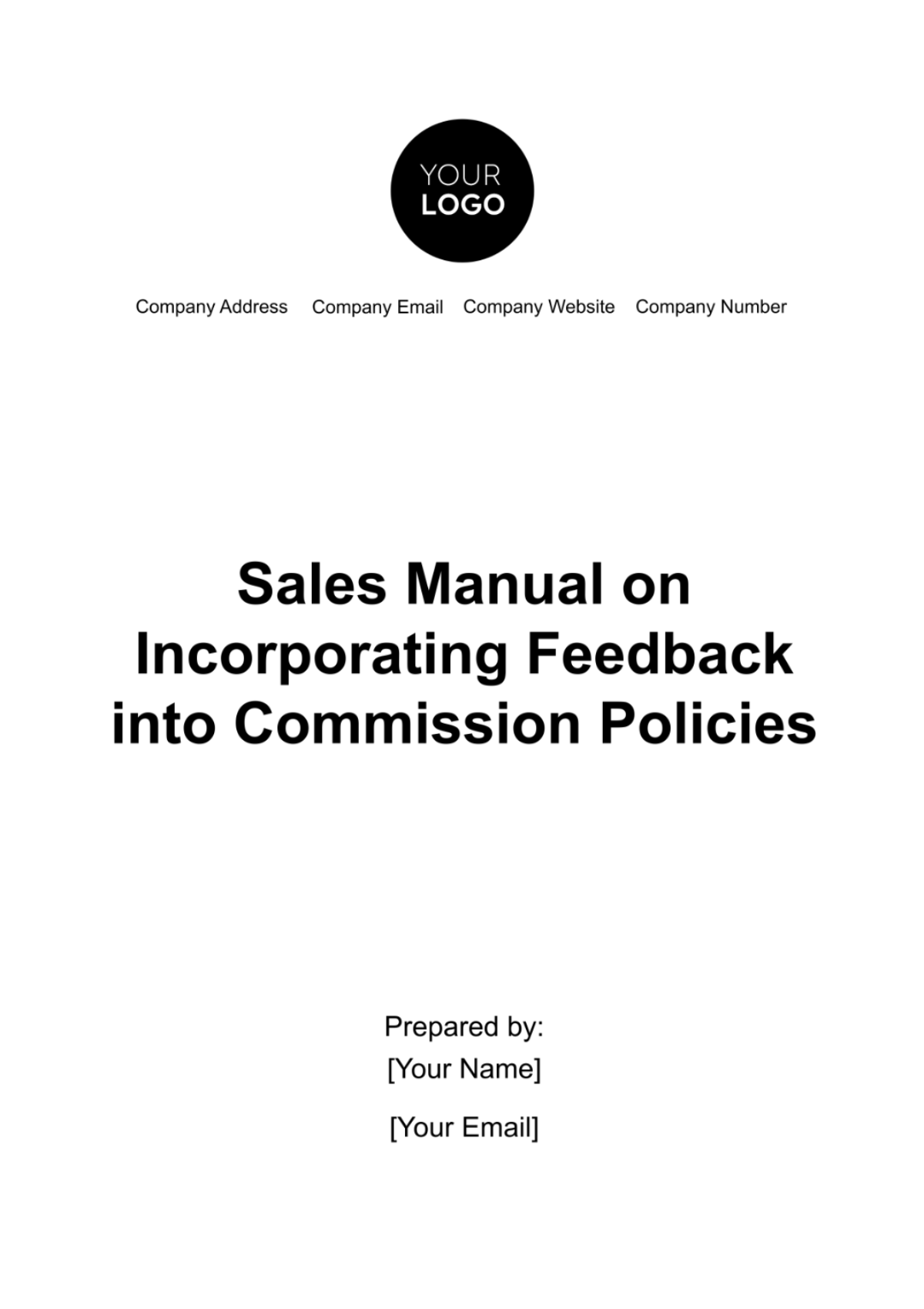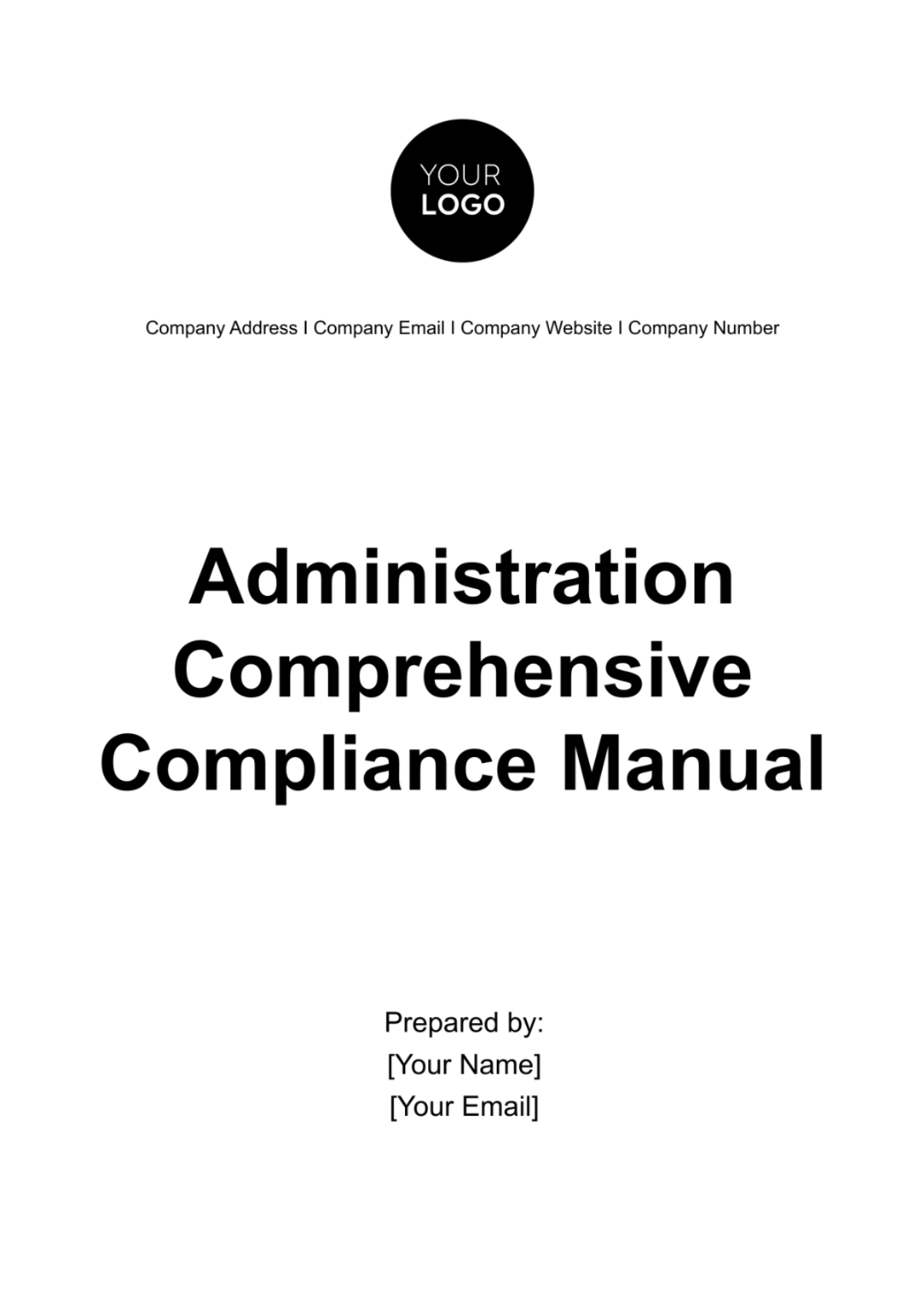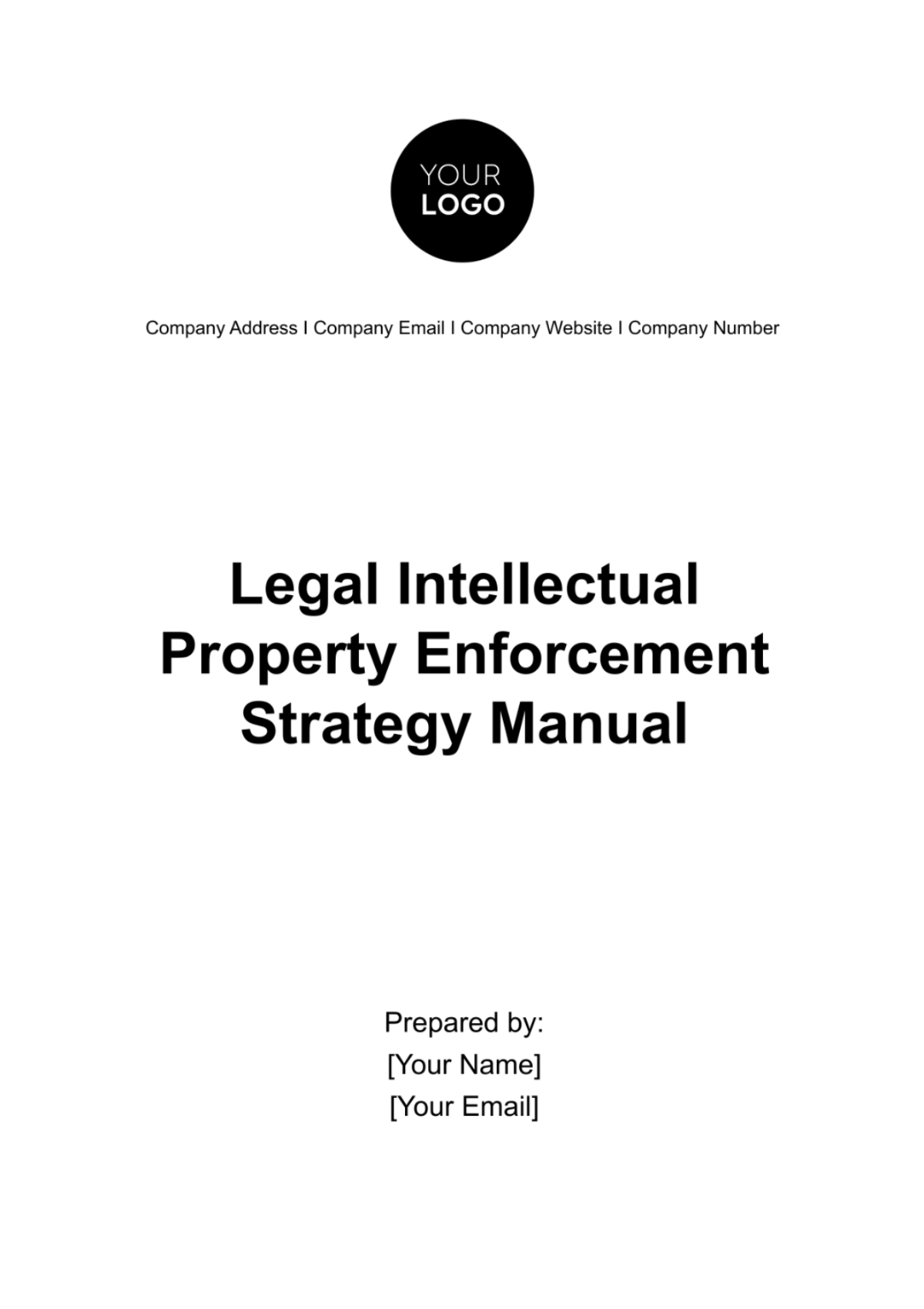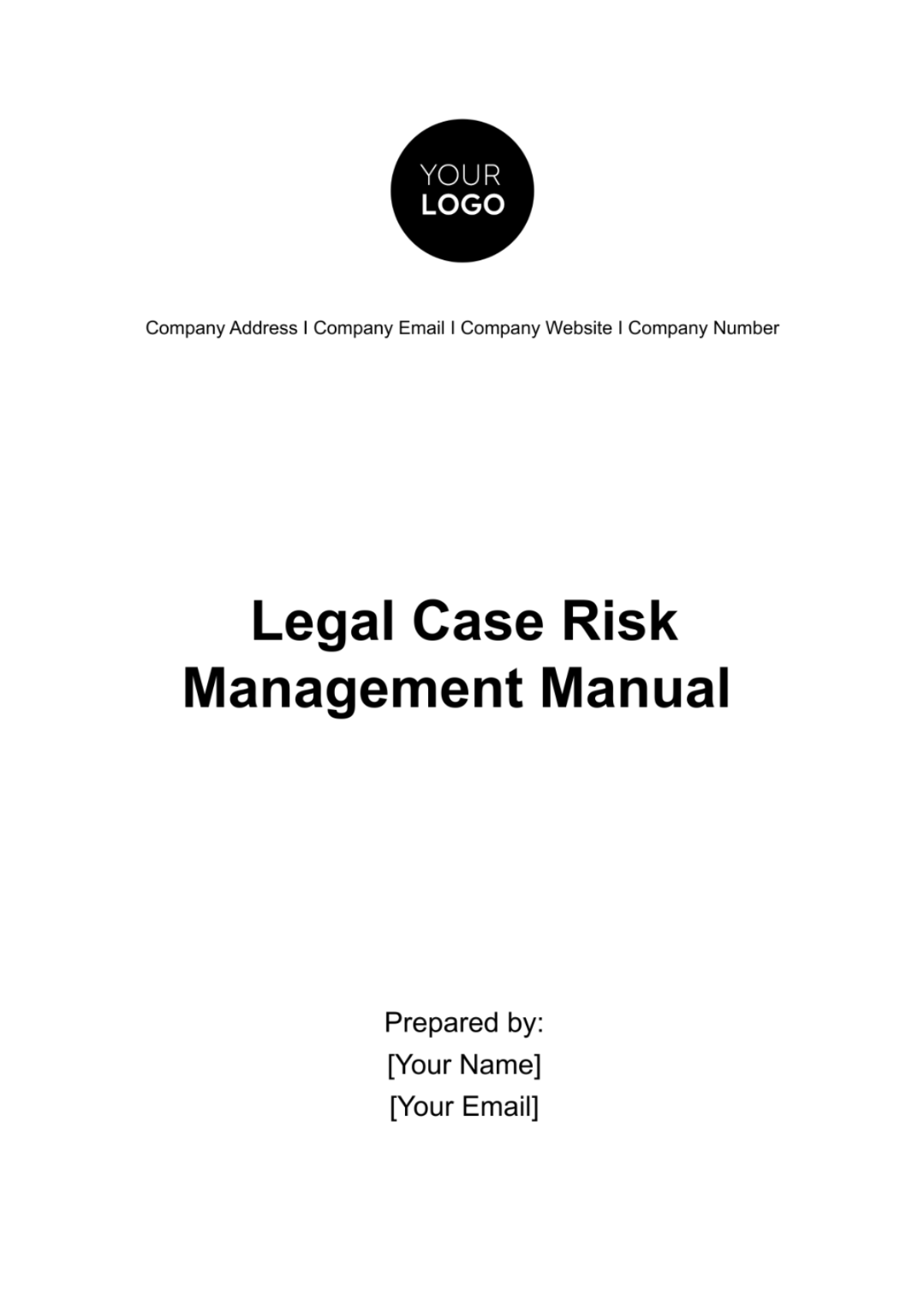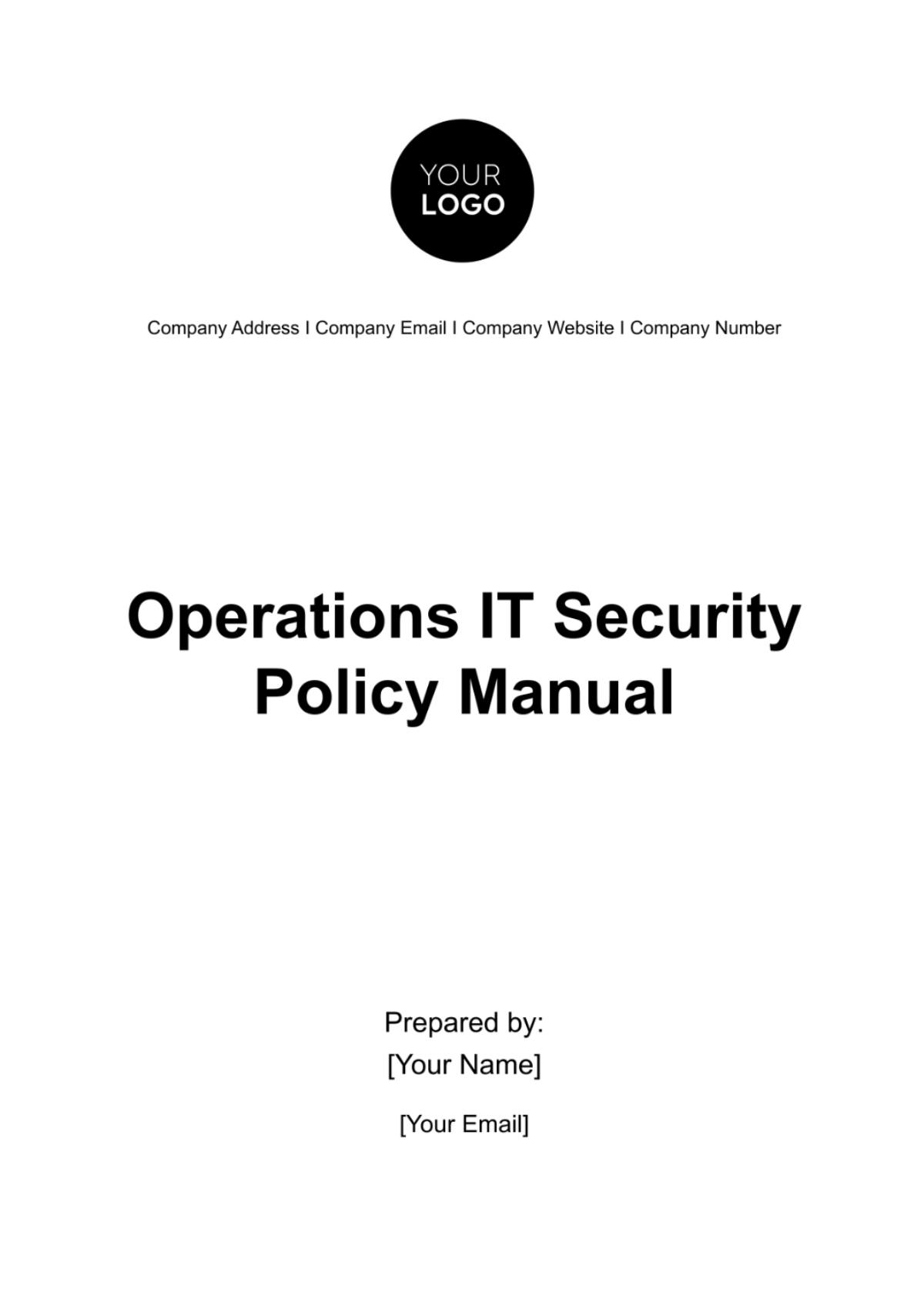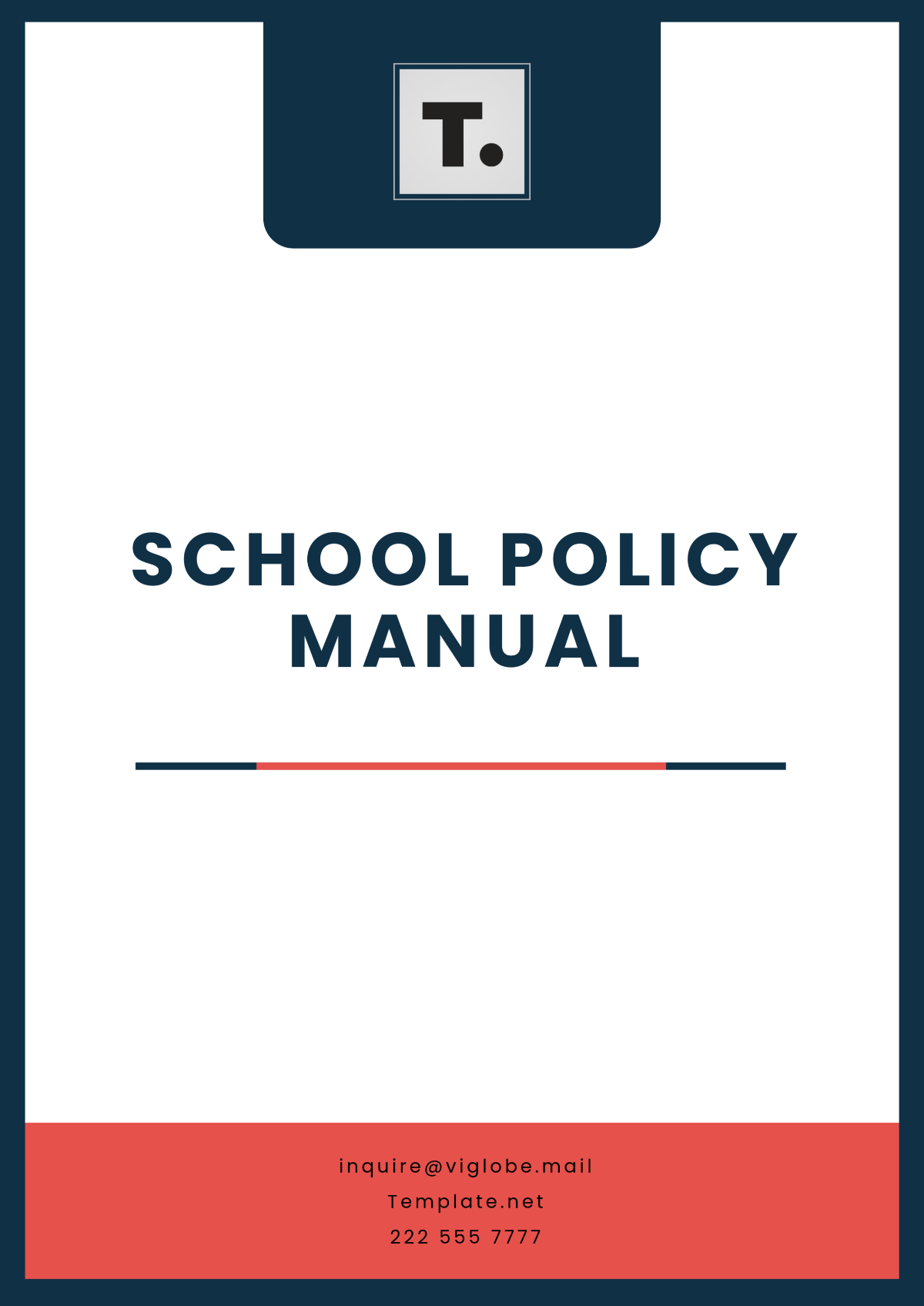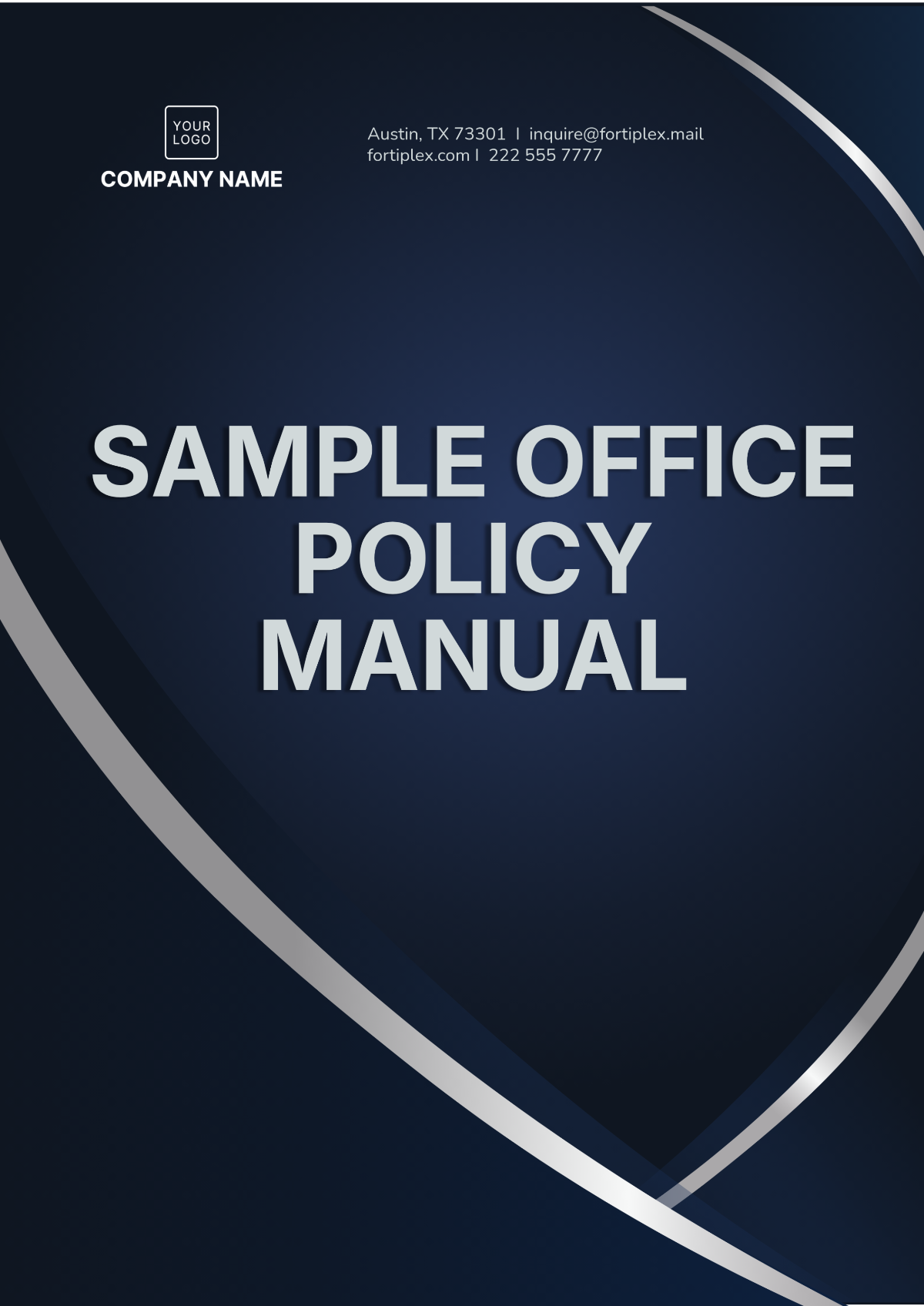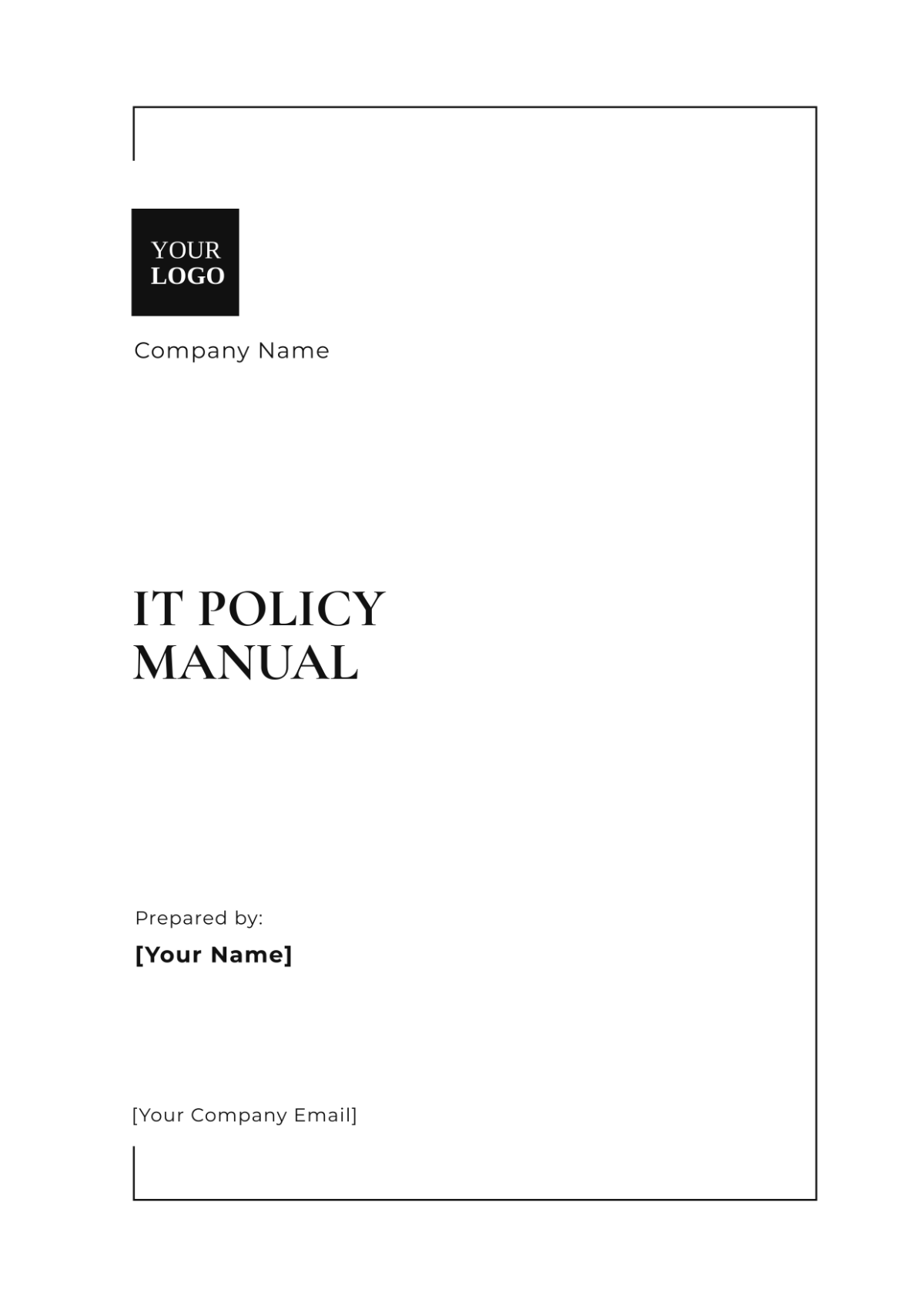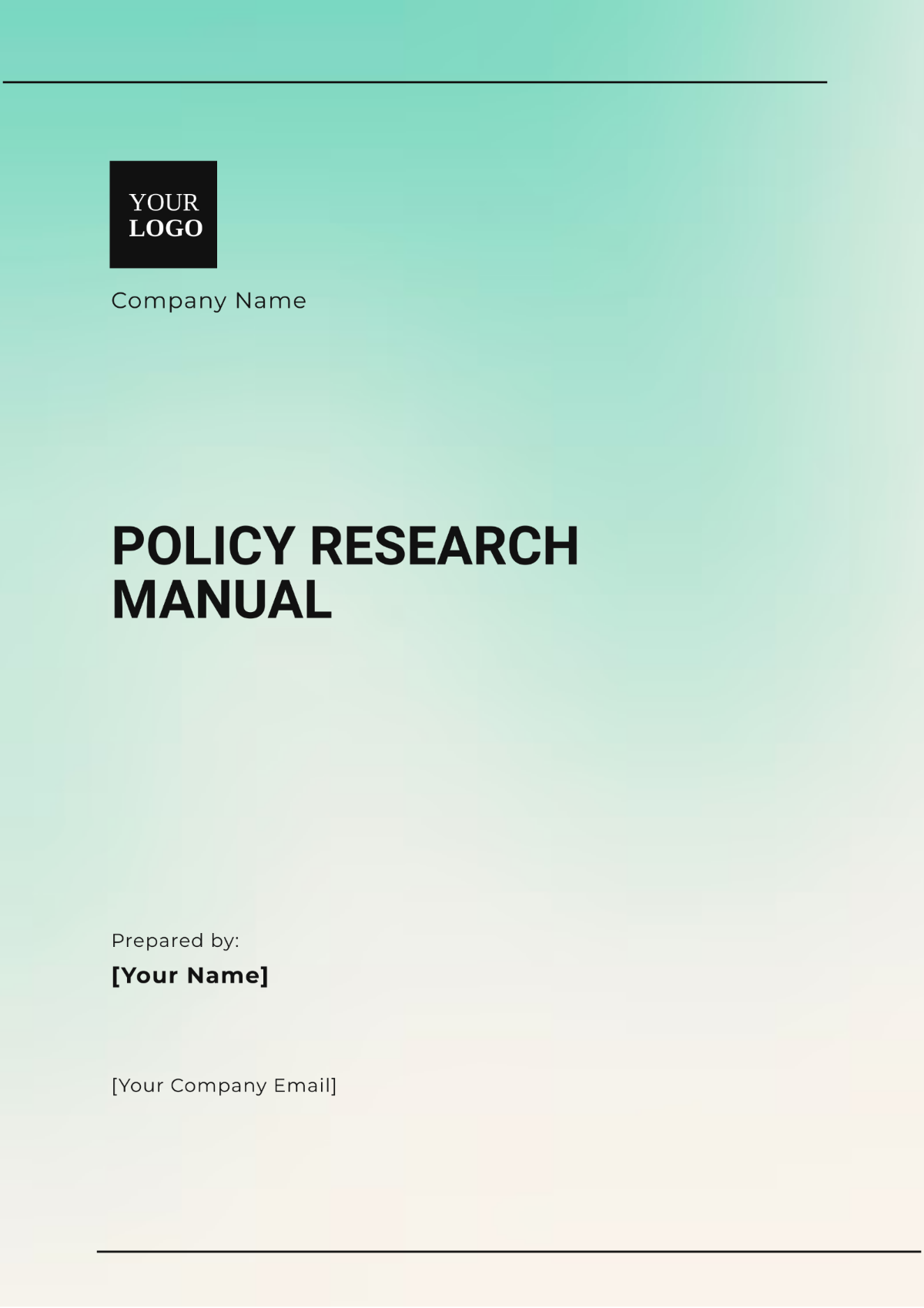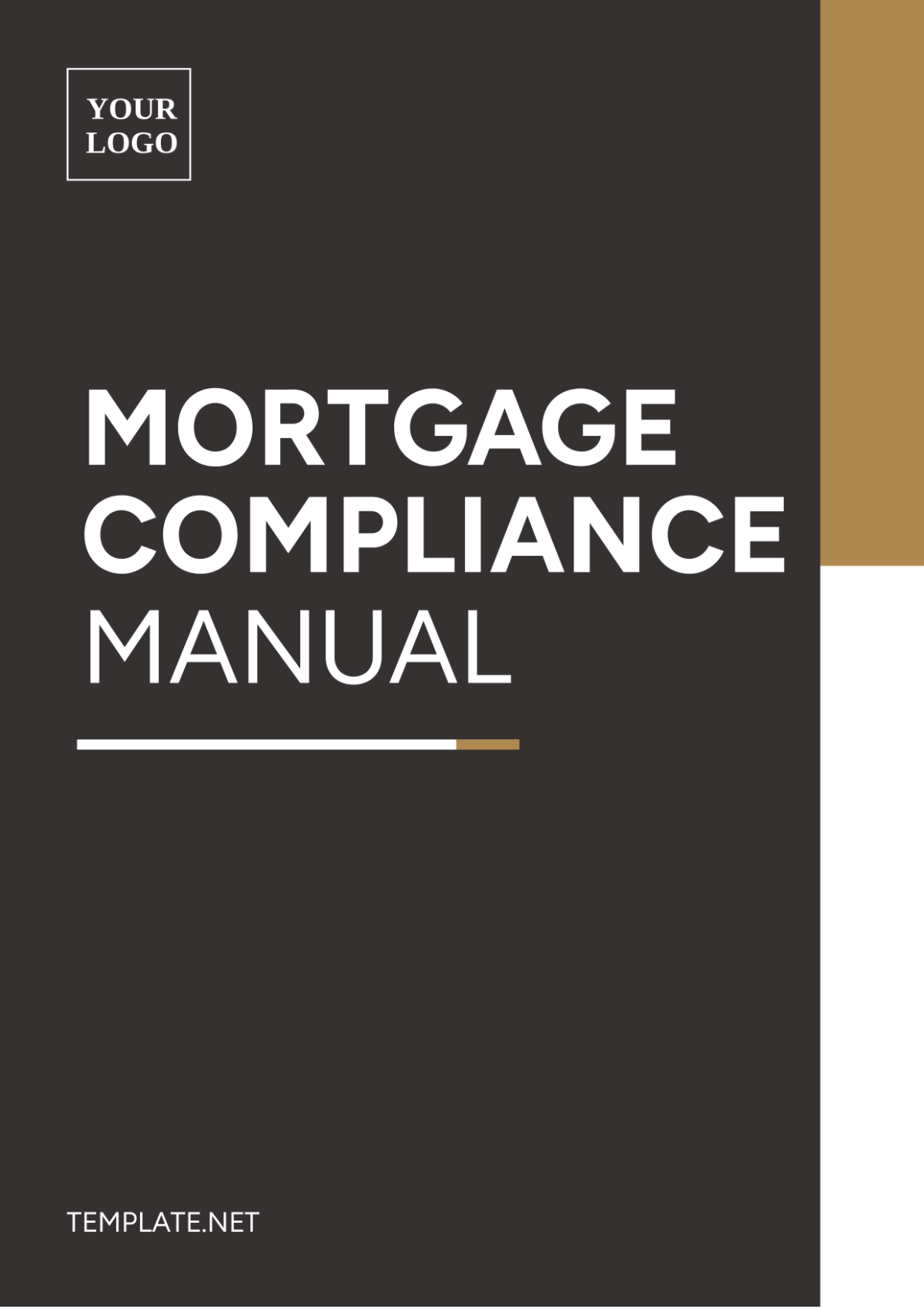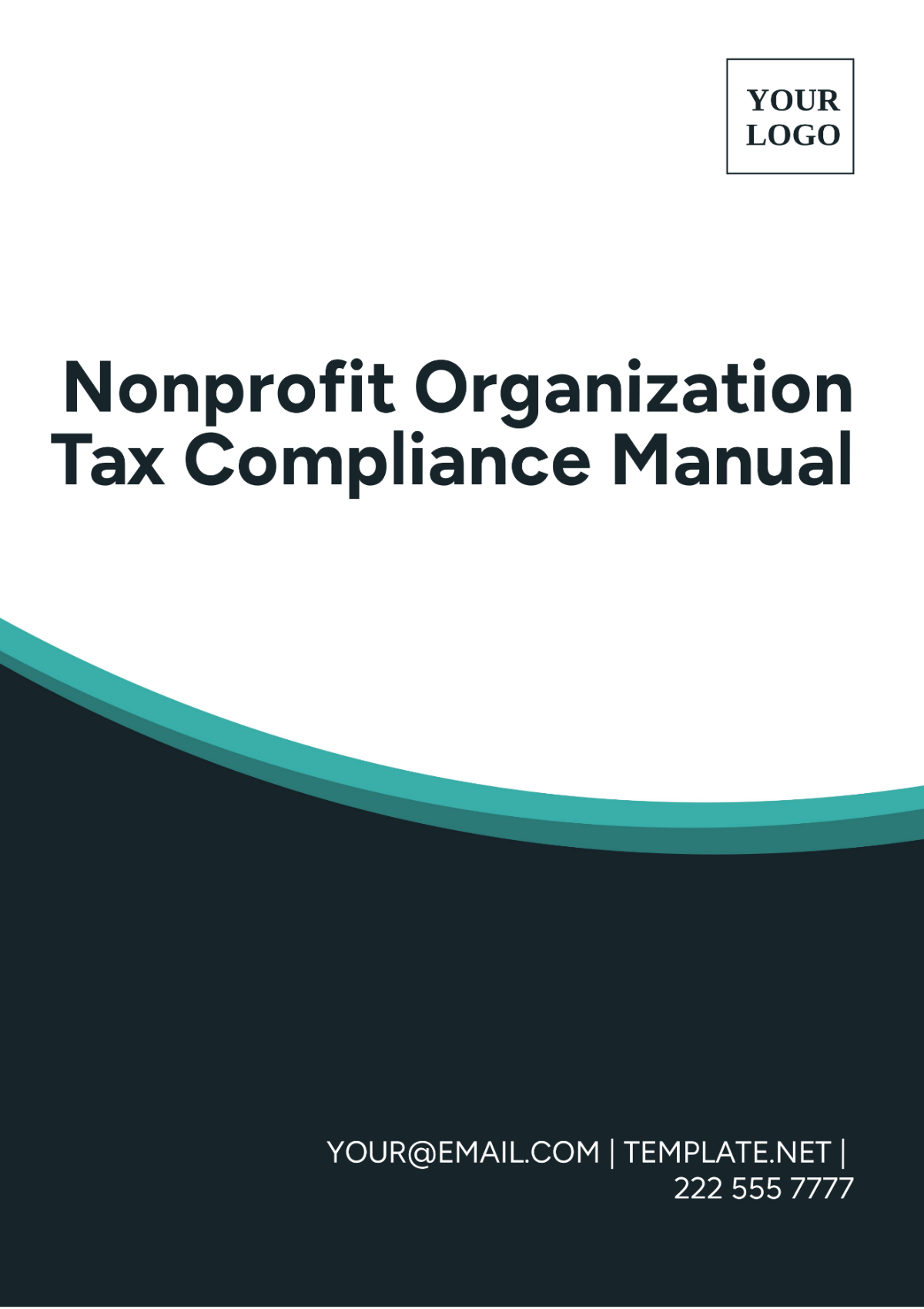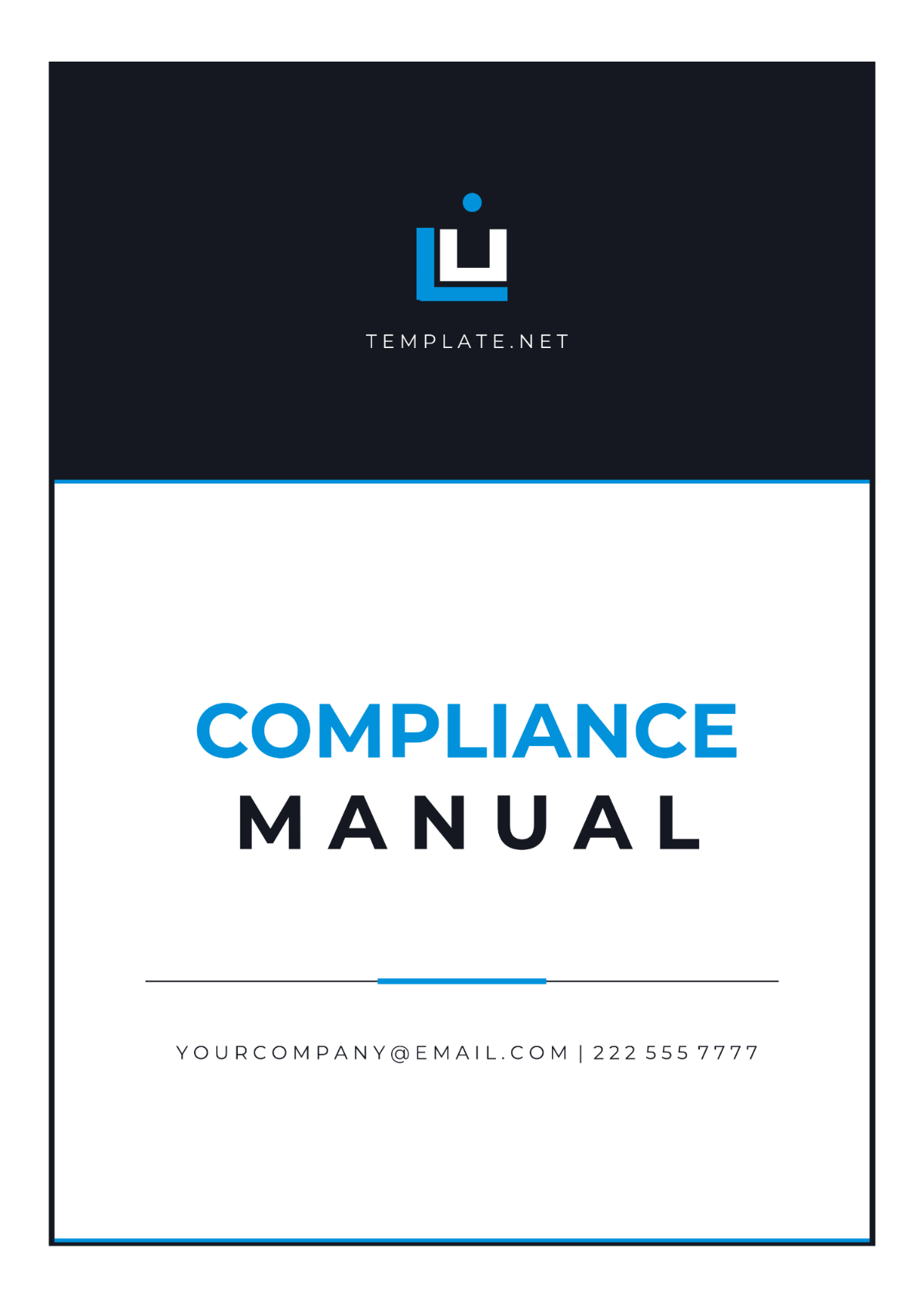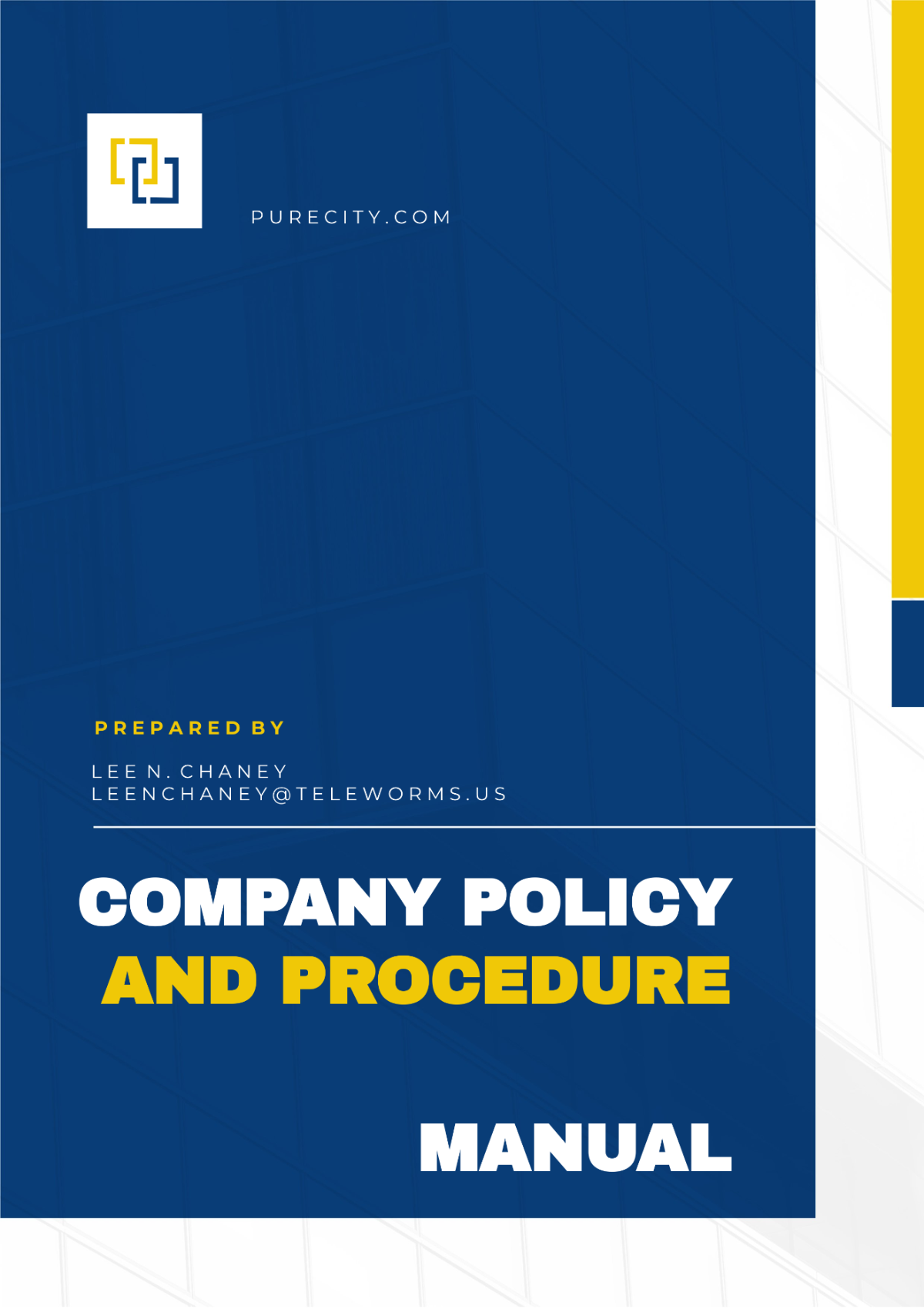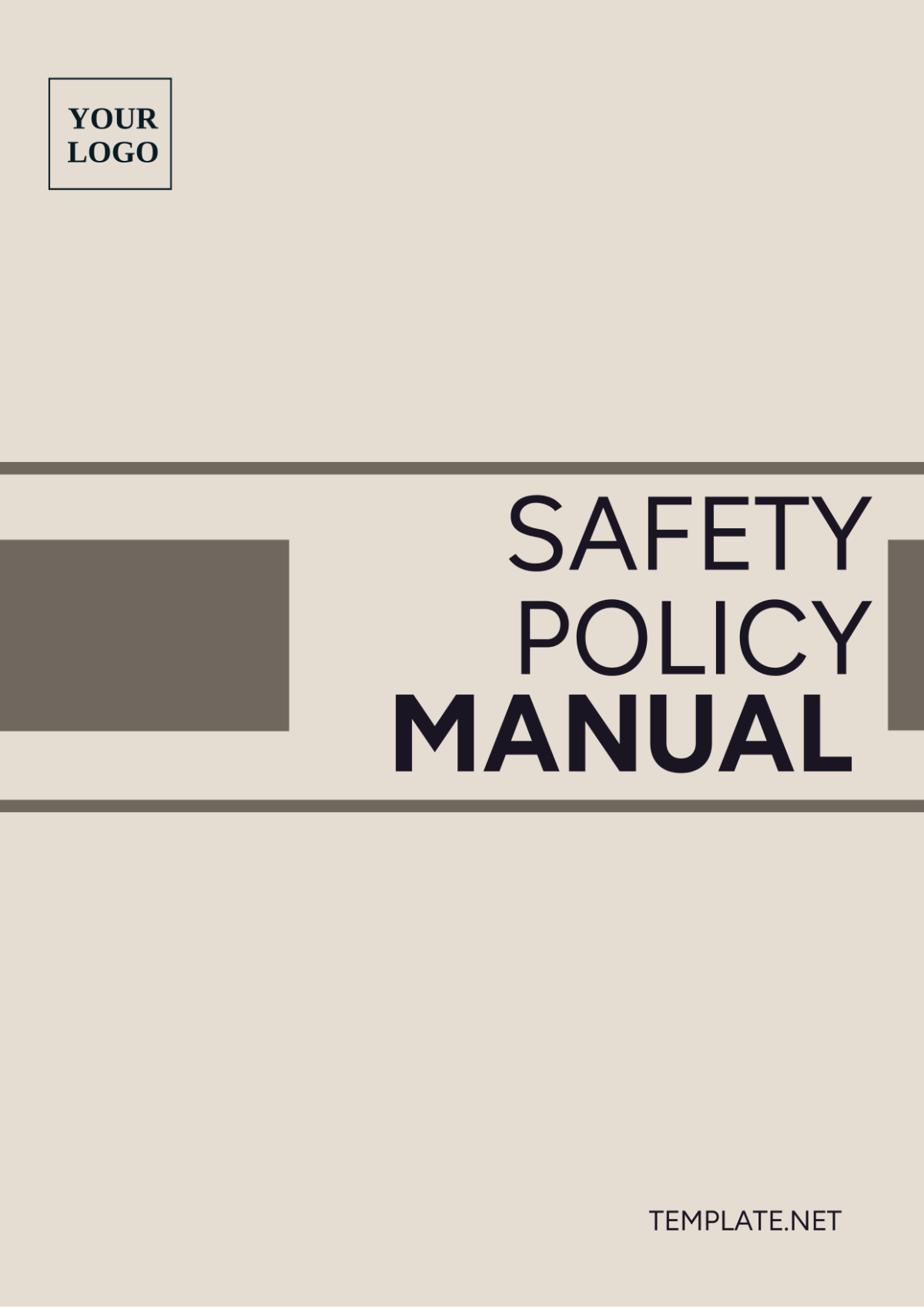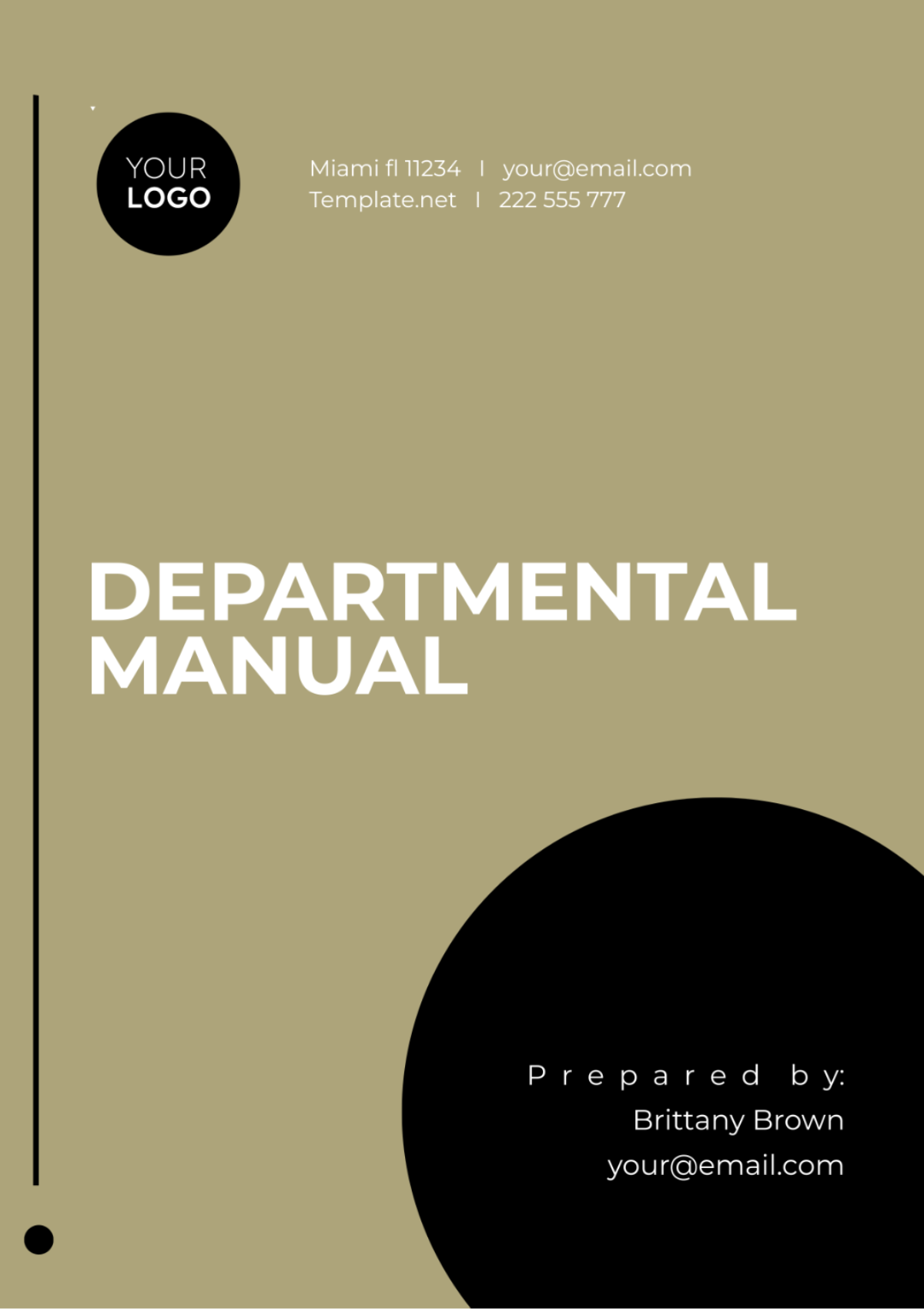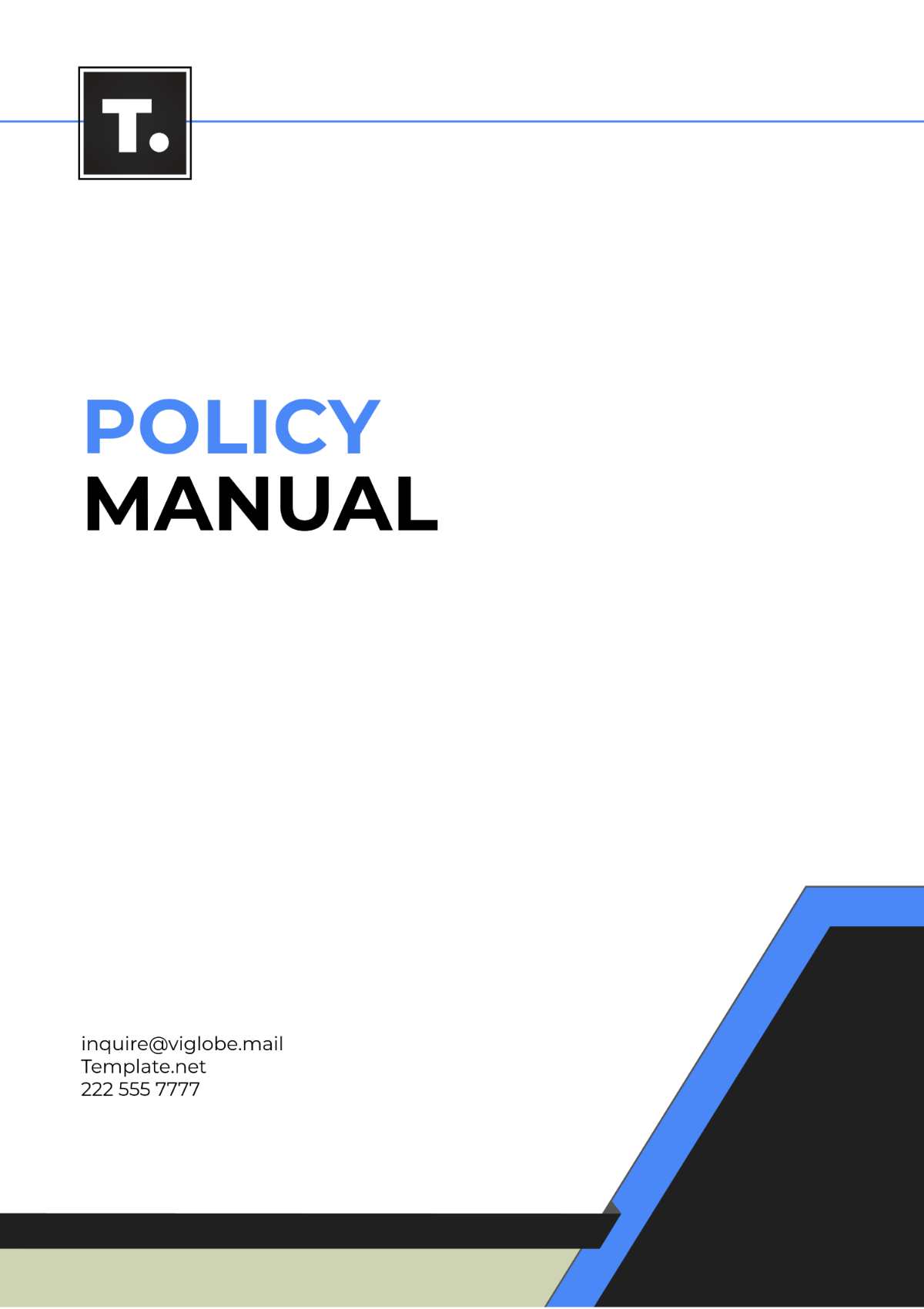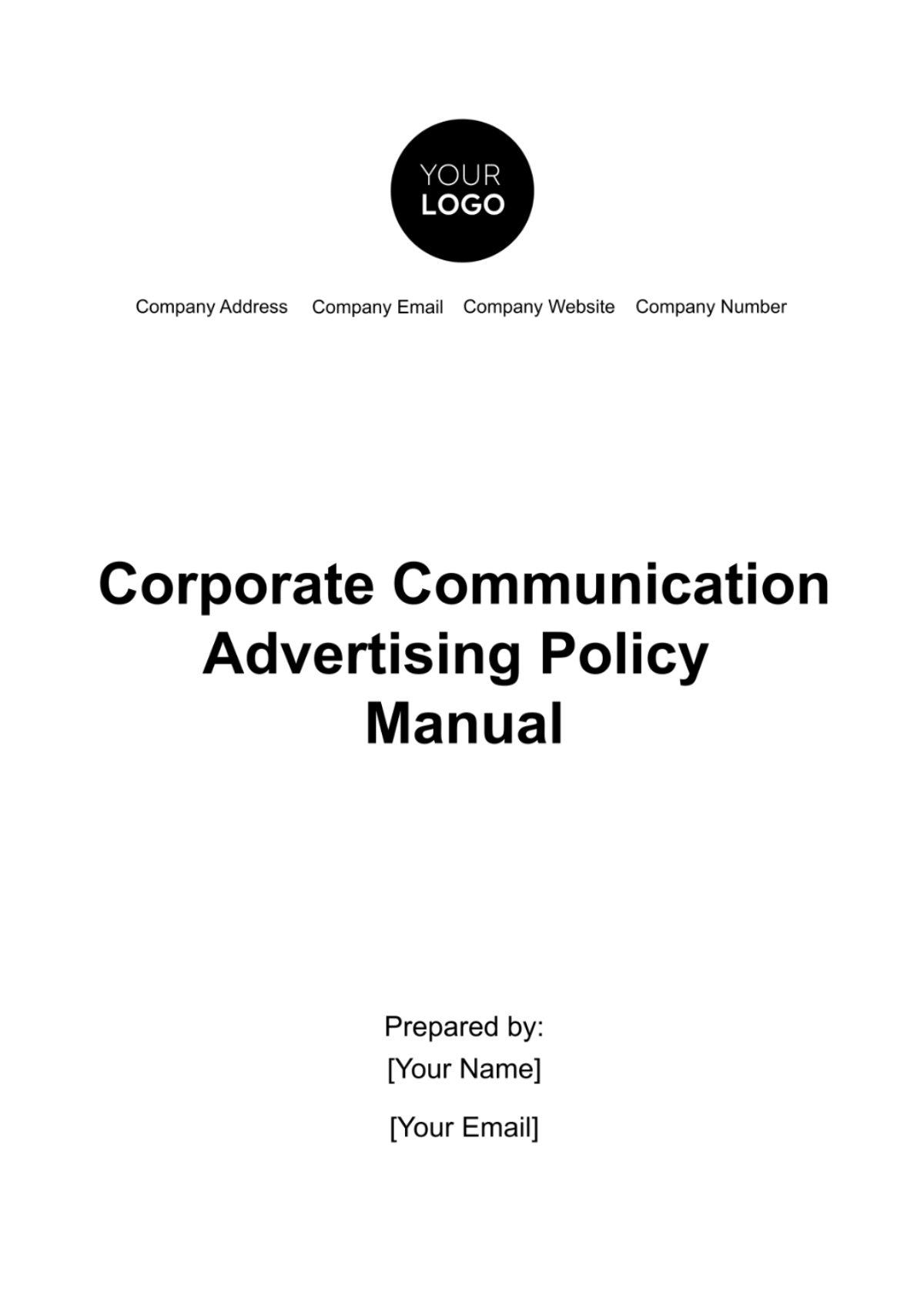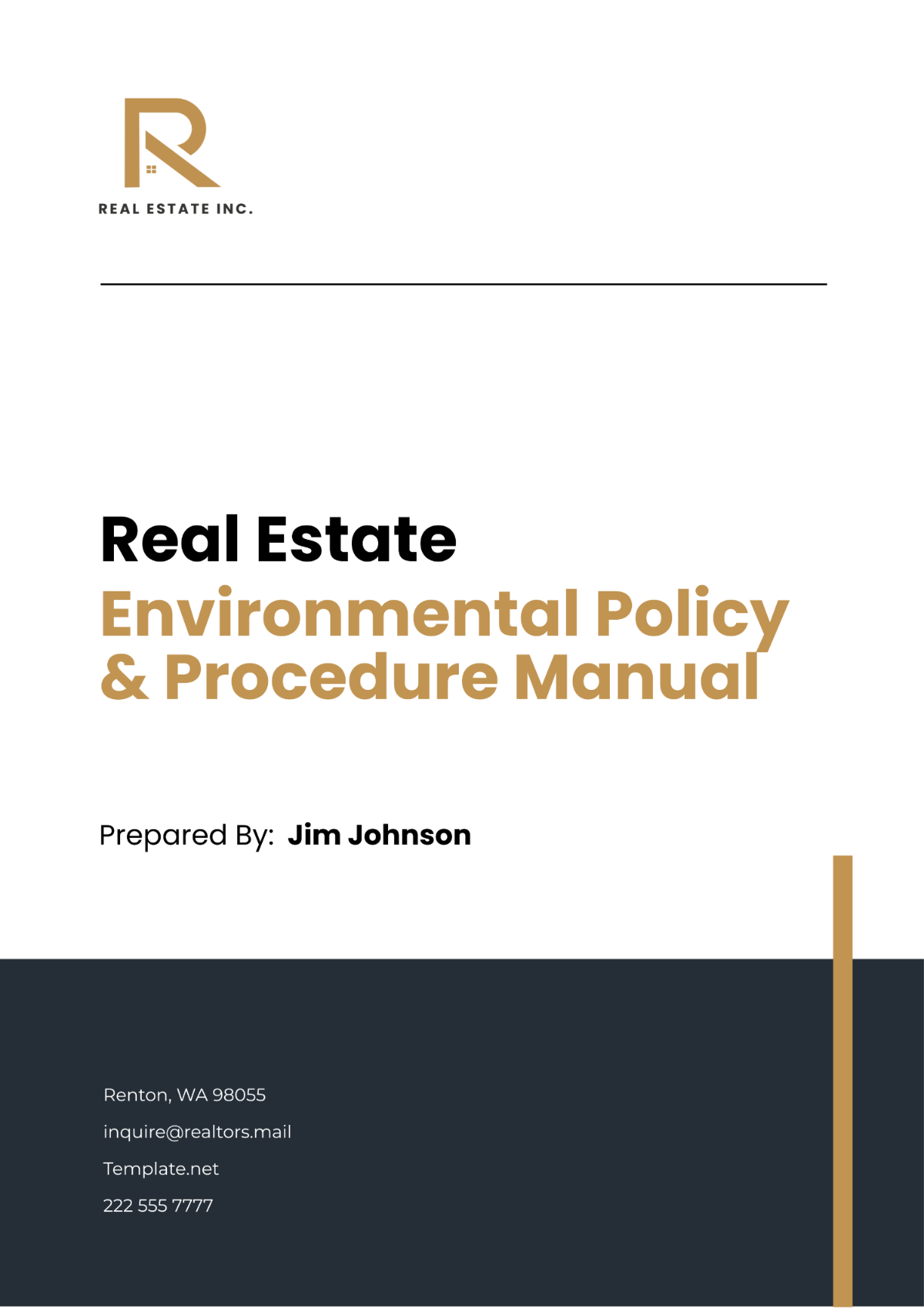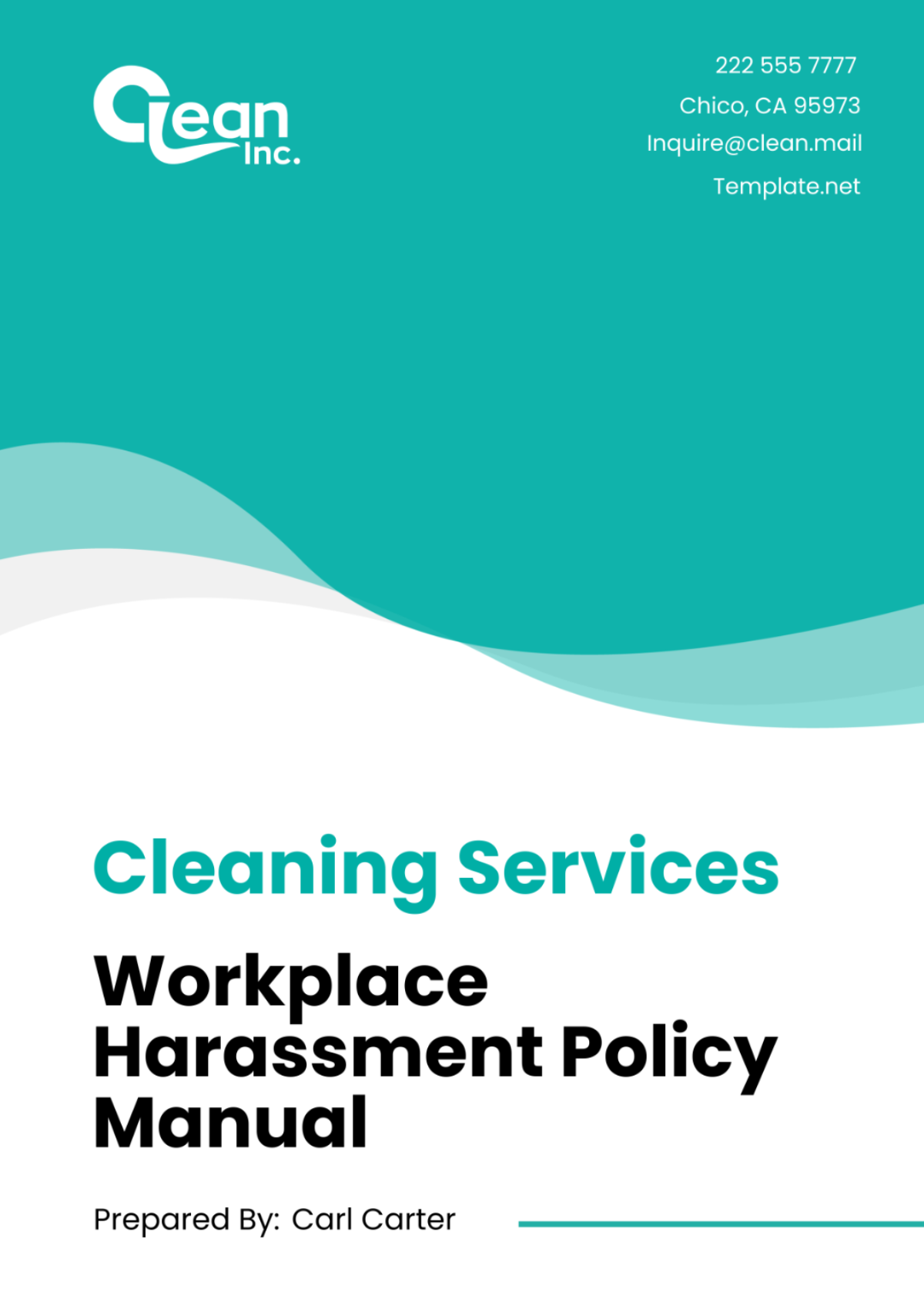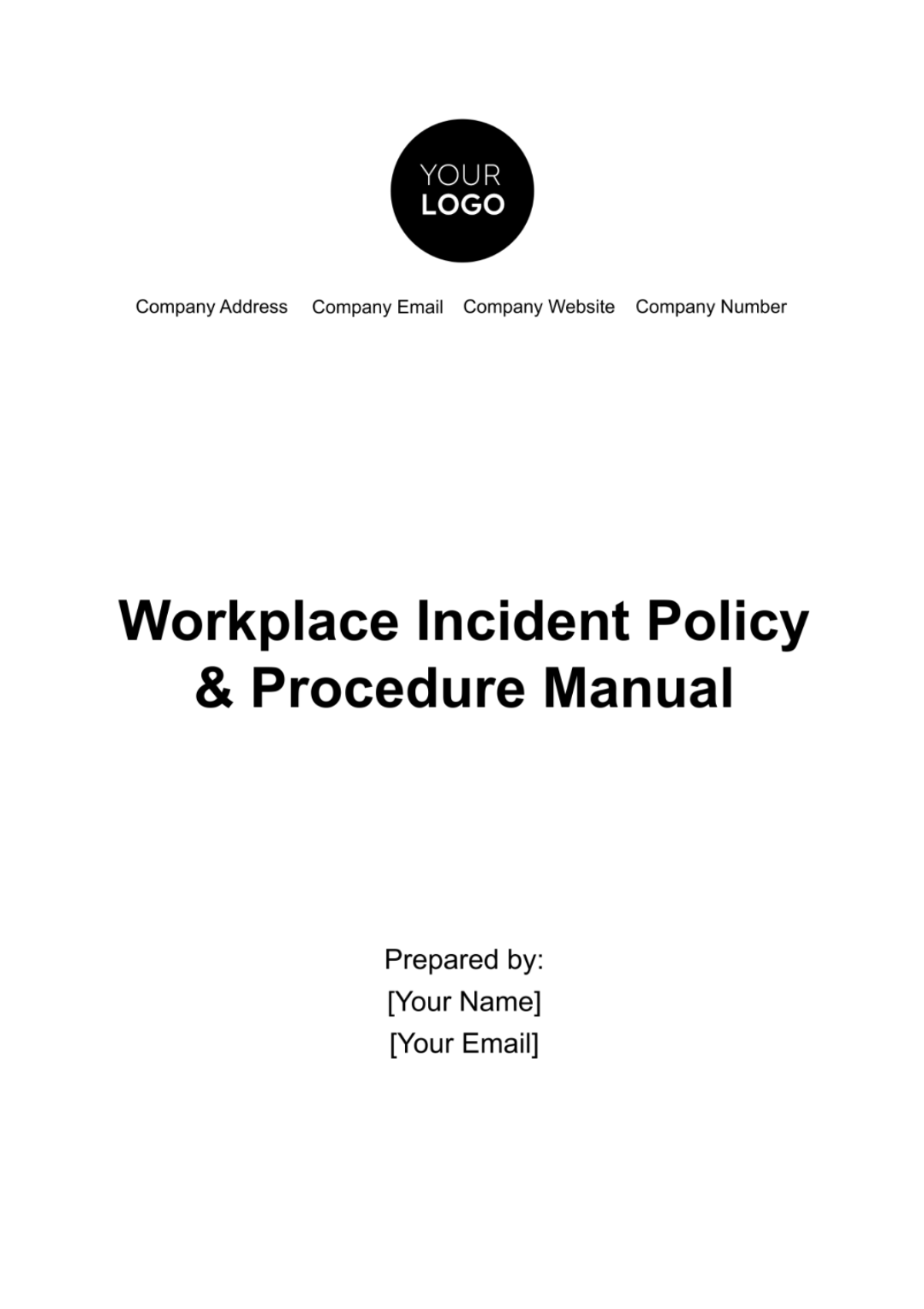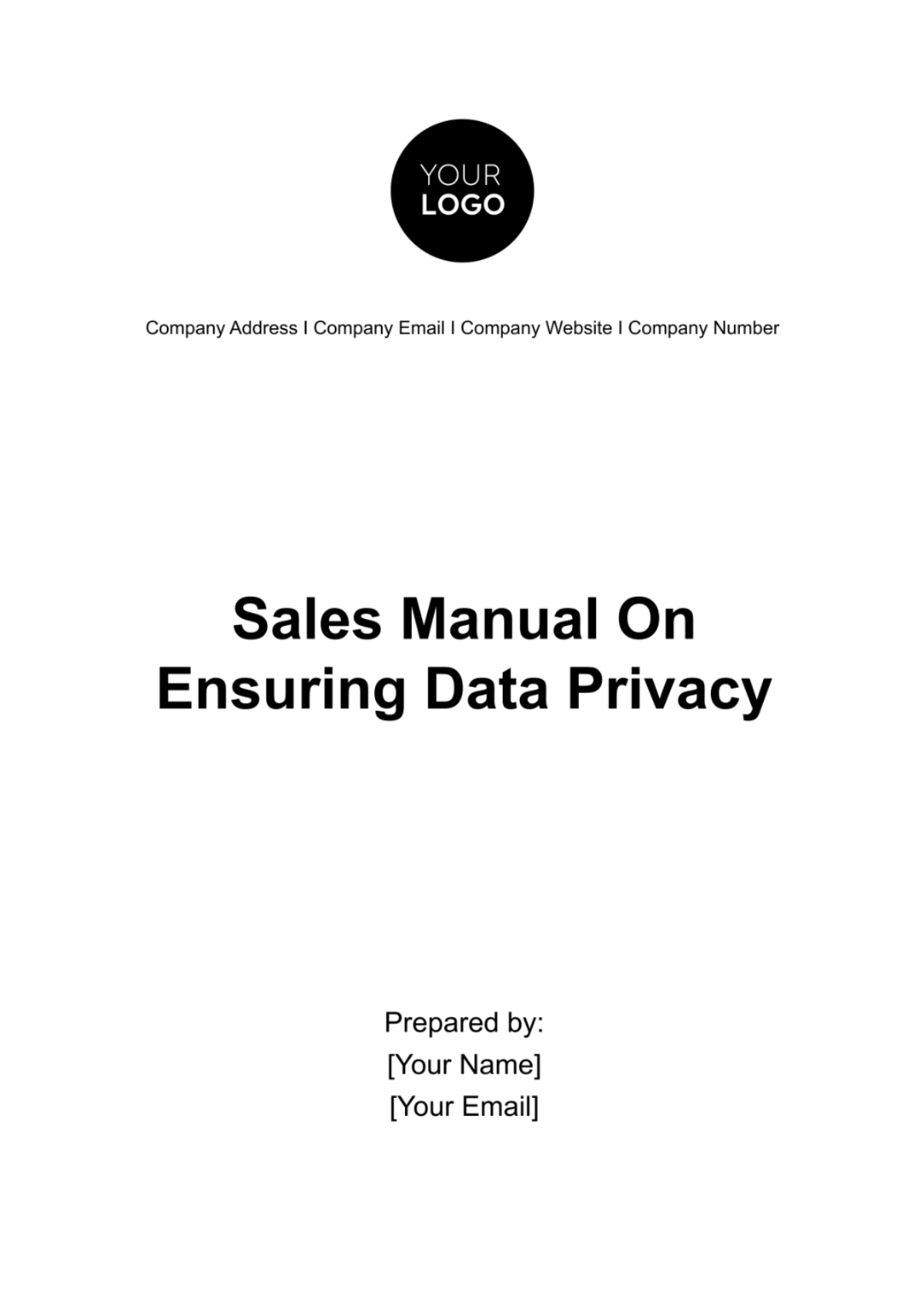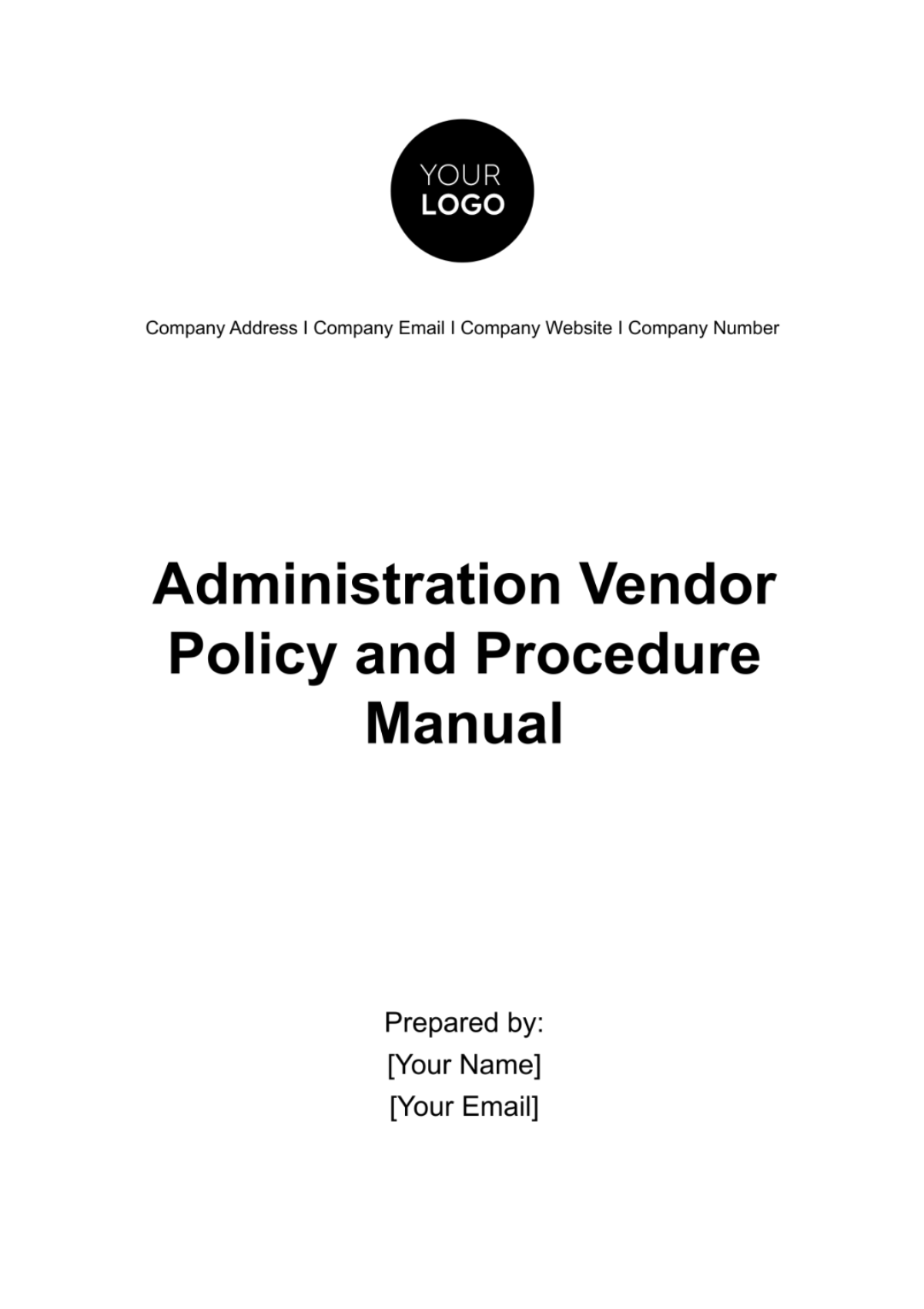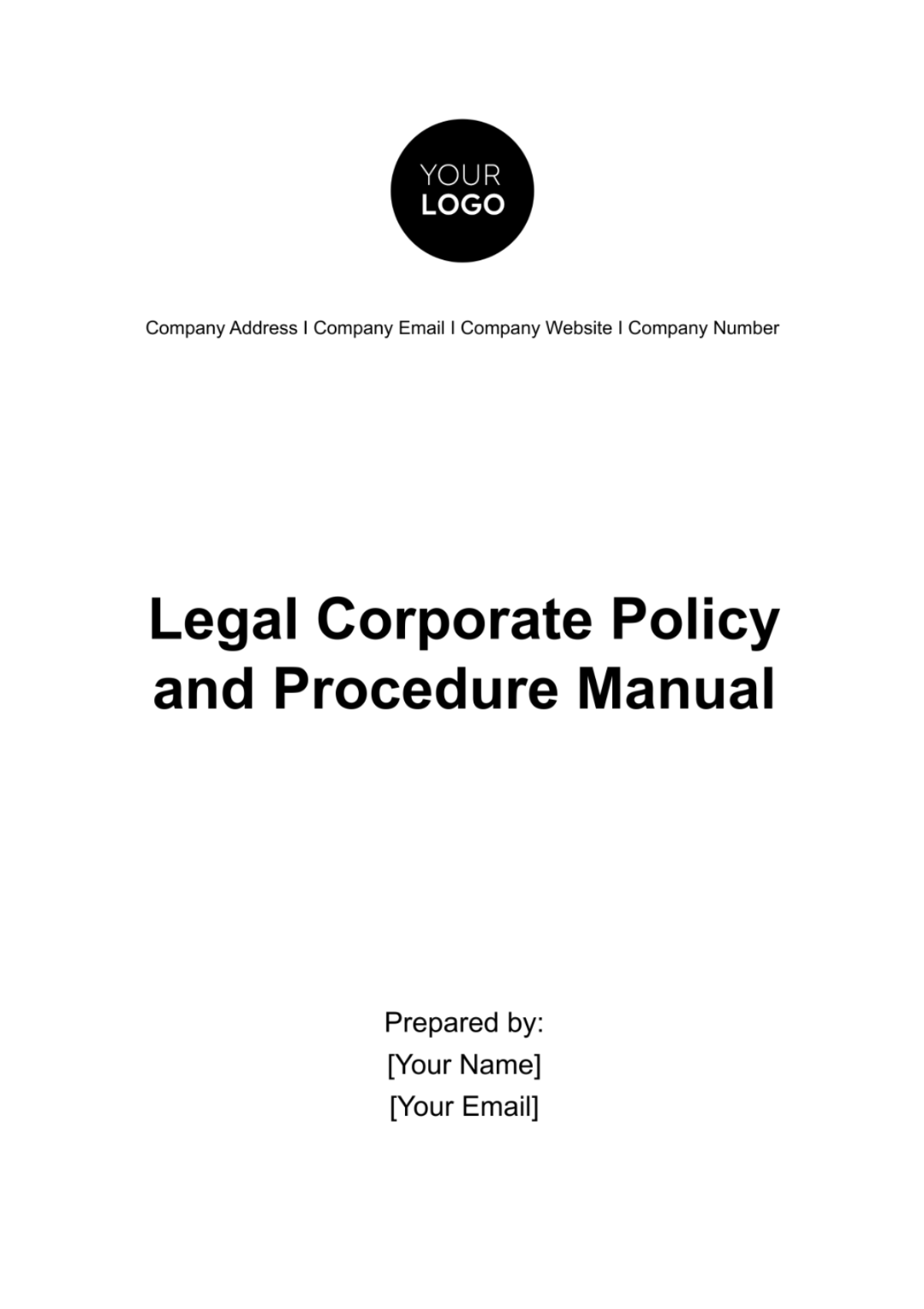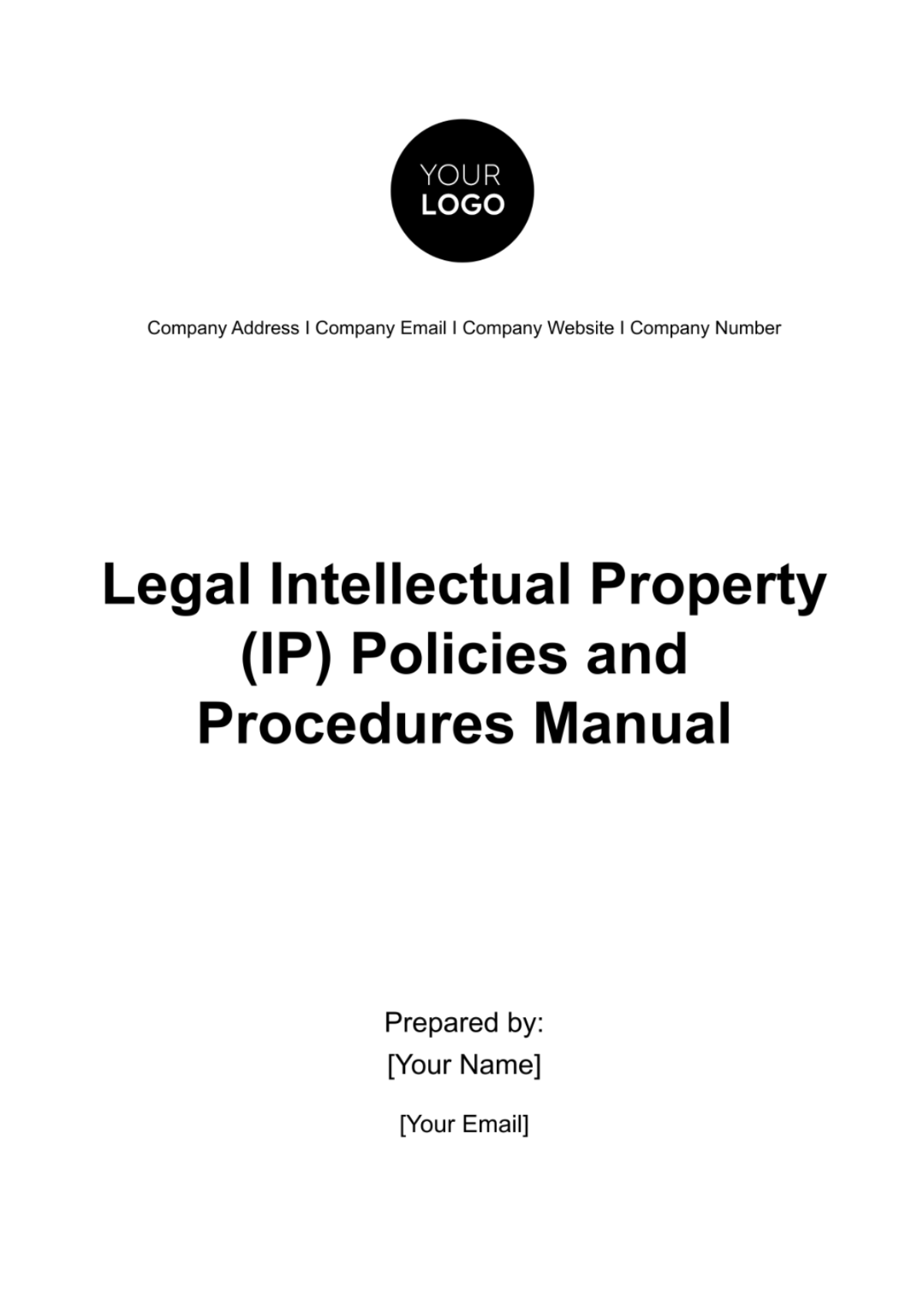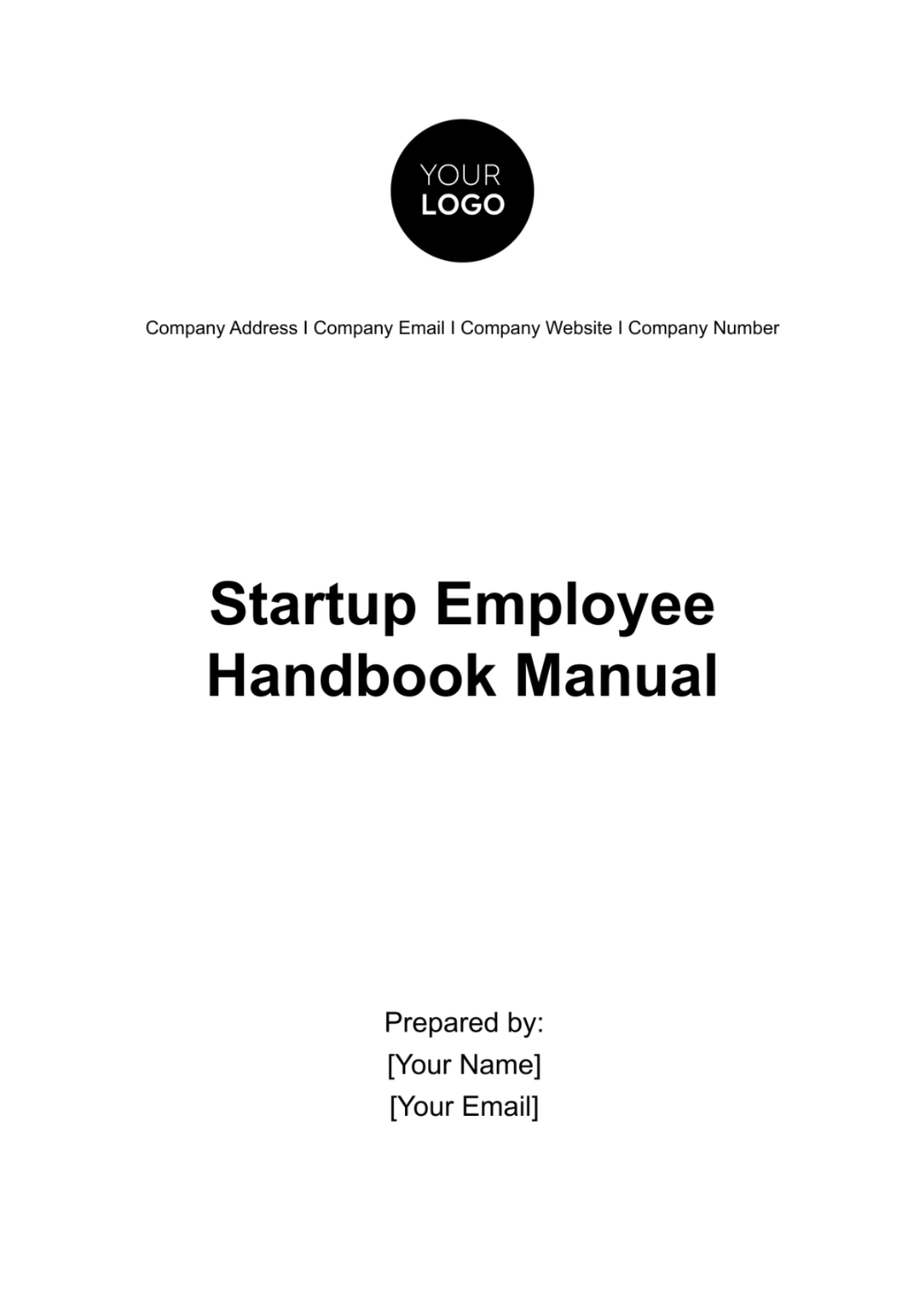Startup Corporate Policy & Procedure Manual
1. Introduction
This manual is a vital document designed to guide you through your journey at [Your Company Name]. It outlines our practices, policies, and procedures, serving as a reference to help you understand your responsibilities and the standards expected. This document will assist in navigating the company's culture and ensure a harmonious and productive work environment.
The policies and procedures contained within this manual are not exhaustive but represent key areas critical to our operations. Employees are encouraged to approach their supervisors or the HR department with any questions for clarifications or issues not directly addressed in this manual. It's important to periodically review this document, as it will be updated to reflect changes in laws, regulations, or company policies.
2. Company Overview
Mission Statement
[Your Company Name] is dedicated to [briefly describe your company’s mission, such as solving a specific problem or delivering a unique value proposition].
Core Values
Integrity
Innovation
Excellence
Teamwork
Customer Focus
Strategic Objectives |
|---|
|
3. Employment Policies
Our hiring process is meticulously designed to attract the best talent, ensuring candidates not only possess the right skills but also align with our company culture. We leverage various recruitment channels and methodologies, emphasizing diversity and inclusion to build a team that reflects the global market we serve. Transparent communication, fairness, and respect are pillars of our recruitment philosophy.
The onboarding and training of new employees are critical to their success and integration into the company. A structured onboarding program introduces new hires to our policies, procedures, and culture, providing them with the tools and knowledge needed to excel in their roles. Continuous learning and development opportunities are offered to all employees, supporting career growth and skill enhancement, which are crucial for maintaining our competitive edge and fostering innovation.
4. Code of Conduct
Ethical Standards | Employees are expected to conduct themselves with integrity, honesty, and respect for others, adhering to the highest ethical standards in all business dealings. |
Conflicts of Interest | Employees must avoid situations where personal interests could conflict with those of [Your Company Name]. Any potential conflicts must be disclosed to management. |
Confidentiality Agreements | Protecting proprietary and confidential information is critical. Employees are required to sign confidentiality agreements and adhere to data protection policies. |
5. Communication Policy
Effective communication is the lifeline of our operations, ensuring that information is shared efficiently and accurately across all levels of the organization. Our internal communication strategy includes regular team meetings, intranet updates, and newsletters, facilitating a transparent and open dialogue. We also employ collaboration tools and platforms to support teamwork and information sharing, enhancing productivity and fostering a culture of openness.
External communication reflects our brand and values to the world. It is crucial that all external messaging, whether through press releases, marketing materials, or social media, is consistent, professional, and aligned with our strategic objectives. Employees responsible for external communications receive specific training to manage these interactions effectively, protecting and promoting our brand's reputation.
6. Financial Policies
Our financial policies are designed to ensure the integrity and accuracy of our financial reporting. Expense reporting procedures are clearly defined, requiring timely submission and appropriate documentation. This transparency and accountability help us manage costs effectively and ensure compliance with audit and financial standards.
Budgeting and forecasting are critical for our financial planning and strategic decision-making. Departments work closely with the finance team to project and monitor their budgets, ensuring alignment with our financial goals. This collaborative approach to financial management supports our sustainability and growth, enabling us to adapt to changing market conditions and seize opportunities.
7. IT and Security Policy
At [Your Company Name], we recognize the critical role of information technology and security in the modern business landscape. Our policies are designed to safeguard our technological assets, protect our data, and ensure that our employees use IT resources responsibly and securely.
IT Usage and Security Guidelines:
Acceptable Use of Technology
Define appropriate use of company technology, including computers, mobile devices, and internet access.
Prohibit the use of company technology for unauthorized or illegal activities.
Software and Applications
List approved software and applications for business use.
Implement procedures for requesting and approving new software installations.
Data Protection and Confidentiality
Outline data classification, handling, and storage procedures.
Emphasize employee responsibility for maintaining data confidentiality.
Cybersecurity Practices
Implement strong password policies and two-factor authentication.
Provide regular cybersecurity training and phishing awareness exercises.
IT Infrastructure and Support:
Area | Description | Responsible Party |
|---|---|---|
Network Security | Secure network infrastructure with firewalls and intrusion detection systems. | IT Department |
Data Backup | Regularly scheduled data backups and disaster recovery planning. | IT Support Team |
Device Management | Inventory and management of company devices, including laptops and smartphones. | IT Administrator |
User Access Control | Procedures for granting, modifying, and revoking access to systems and data. | Security Officer |
8. Health and Safety
[Your Company Name] is committed to providing a safe and healthy work environment for all employees, contractors, and visitors. Our health and safety policies are designed to comply with all applicable laws and regulations, and to integrate best practices for workplace safety and wellness.
Workplace Safety Guidelines:
Emergency Preparedness
Develop and communicate plans for responding to emergencies, including fire, medical emergencies, and natural disasters.
Conduct regular emergency drills and training for employees.
Workplace Ergonomics
Provide guidelines and resources for setting up ergonomic workstations.
Offer assessments and adjustments to reduce strain and prevent injuries.
Accident Reporting and Investigation
Establish a clear process for reporting accidents and near-misses.
Investigate incidents to identify causes and implement corrective actions.
Health Promotion and Wellness
Encourage a culture of health and wellness through programs that support physical and mental well-being.
Offer resources such as gym memberships, mental health days, and wellness
workshops.
Health and Safety Programs:
Program | Description | Implementation Date |
|---|---|---|
First Aid Training | Provide first aid training and certification for designated employees. | [Month, Year] |
Health Screenings | Offer regular health screenings and flu vaccination clinics. | [Month, Year] |
Safety Committee | Establish a safety committee to review practices, conduct audits, and address concerns. | [Month, Year] |
Mental Health Support | Implement support programs and resources for mental health and stress management. | [Month, Year] |
9. Environmental Policy
[Your Company Name] is committed to leading by example when it comes to environmental stewardship. Our policies and practices are designed to minimize our impact on the environment, while also fostering a culture of sustainability among our employees and stakeholders.
Key Areas of Focus:
Energy Efficiency
Implement energy-saving practices across all operations.
Invest in energy-efficient technologies and appliances.
Sustainable Resource Use
Prioritize the use of renewable resources.
Reduce water usage through efficient practices.
Waste Reduction and Recycling
Implement comprehensive recycling programs.
Minimize waste in operations and supply chains.
Sustainable Procurement
Purchase eco-friendly and sustainable materials.
Evaluate suppliers based on their environmental performance.
Employee Engagement and Education
Conduct regular training sessions on environmental responsibility.
Encourage employee participation in sustainability initiatives.
Environmental Initiatives:
Initiatives | Description | Implementation Date |
|---|---|---|
Green Office Certification | Aim to achieve certification for sustainable office practices. | [Month, Year] |
Carbon Footprint Reduction Plan | Implement strategies to measure and reduce our carbon emissions. | [Month, Year] |
Community Clean-Up Program | Organize quarterly community clean-up events to promote environmental care. | [Month, Year] |
Renewable Energy Projects | Invest in renewable energy projects to offset energy usage. | [Month, Year] |
10. Compliance and Legal
Compliance with legal standards and regulations is not only a responsibility but a cornerstone of our operational integrity at [Your Company Name]. Our approach is proactive, ensuring that we not only meet current legal requirements but also anticipate changes that could impact our business.
Compliance Framework:
Regulatory Monitoring
Regularly review and monitor changes in laws applicable to our industry.
Implement a compliance calendar to track reporting and compliance deadlines.
Ethical Business Practices
Maintain a zero-tolerance policy for corruption and unethical behavior.
Conduct ethics training for all employees, emphasizing our commitment to integrity.
Data Protection and Privacy
Ensure compliance with data protection laws, such as GDPR for European operations.
Implement strict data security measures to protect customer and employee information.
Intellectual Property Rights
Respect and protect intellectual property rights, both internally and in dealings with third parties.
Conduct regular IP audits to ensure compliance and address potential infringements.
Legal and Compliance Responsibilities:
Role | Responsibilities |
|---|---|
Legal Department | Oversee all legal aspects of the business, including contracts, disputes, and compliance issues. |
Compliance Officer | Monitor compliance with laws and regulations, conduct risk assessments, and manage compliance training. |
Department Heads | Ensure departmental compliance with internal policies and external regulations. |
All Employees | Adhere to ethical standards, company policies, and legal requirements. |
Training and Awareness:
Conduct annual legal and compliance training for all employees.
Provide specialized training for departments with specific regulatory requirements.
Utilize newsletters and intranet posts to keep employees informed about compliance news and updates.
11. Amendments and Revisions
The business environment, along with laws and regulations, is ever-evolving. As such, [Your Company Name] is committed to ensuring that our Corporate Policy & Procedure Manual remains current and reflective of the best practices for our operations and compliance requirements. This document will be reviewed annually or as needed to incorporate changes in legal regulations, industry standards, and our internal processes. Amendments and revisions will be documented, including a summary of changes made, the date of amendment, and the sections affected. Employees will be notified of significant updates and provided with access to the revised manual. It is the responsibility of all employees to stay informed about policy changes and to understand how these changes may affect their roles and responsibilities within the company.
12. Acknowledgment of Receipt and Understanding
To ensure compliance and foster a culture of transparency and accountability, all employees, upon joining [Your Company Name], and subsequently after any major updates to this manual, are required to sign an acknowledgment of receipt and understanding. This acknowledgment confirms that the employee has received the manual, understands the policies and procedures it contains, and agrees to abide by them as a condition of their employment. It also serves as a reminder that it is the employee's responsibility to read, understand, and adhere to the policies and procedures outlined within this manual. The signed acknowledgment will be kept in the employee's HR file as part of their permanent record. This process ensures that all team members are aware of the expectations set forth and are committed to upholding the standards and values that define [Your Company Name].
